THE FEMALE-FOUNDED VC FROM HELSINKI CATALYSING EUROPE’S GREEN TRANSITION


EMBRACE THE TRANSFORMATIVE POTENTIAL OF AN INNOVATION MINDSET
 We sit down with Bart Coppelmans to discuss the innovative approach to location intelligence at HERE Technologies
We sit down with Bart Coppelmans to discuss the innovative approach to location intelligence at HERE Technologies
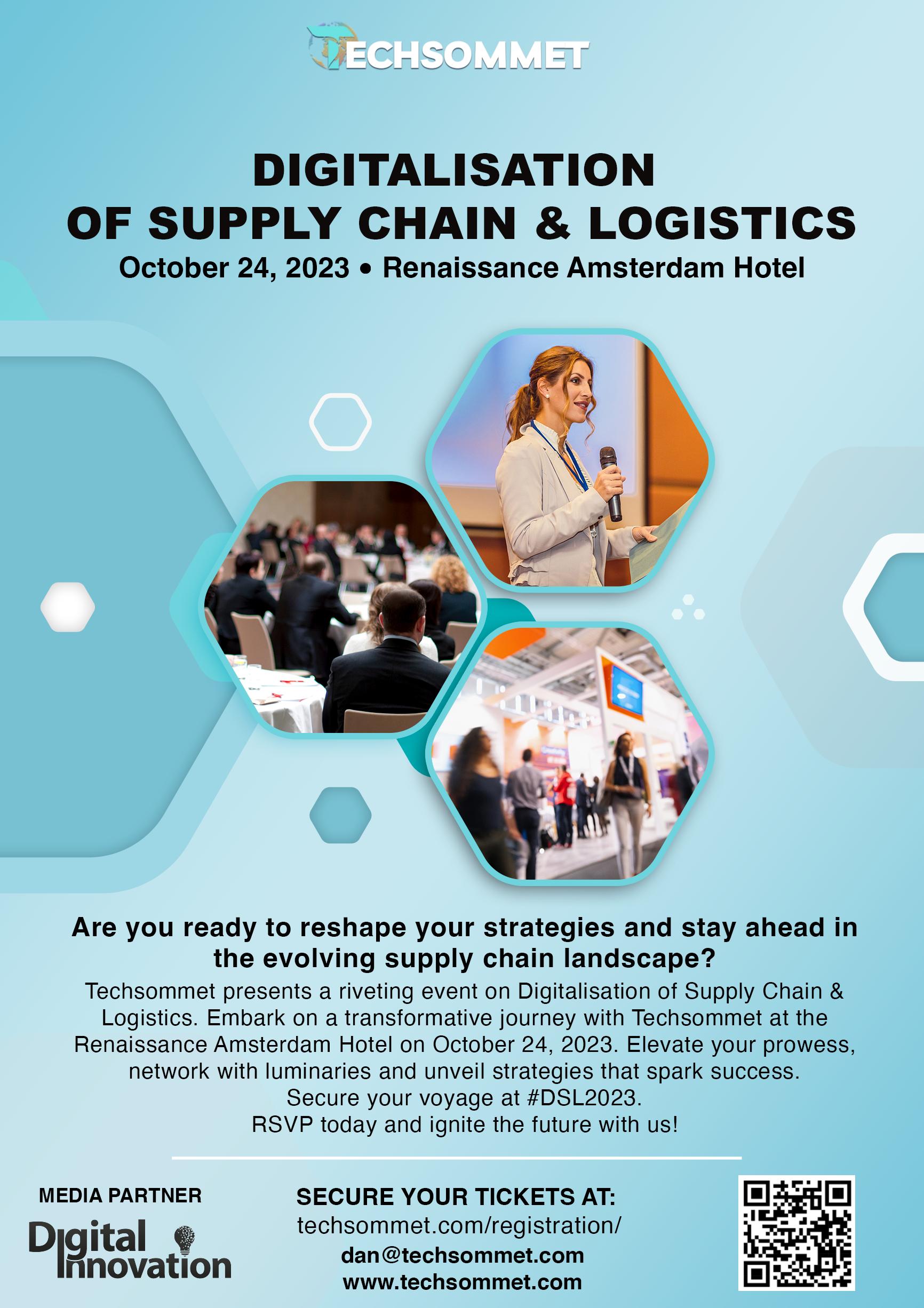
FROM THE EDITOR
We are thrilled to bring you the September edition of Digital Innovation Magazine!
Our cover interview is with Bart Coppelmans, Director of Industry Solutions, Global Head of Supply Chain & Logistics at HERE Technologies. I sit down with him to discuss the company’s innovative deployment of the latest location intelligence technology to empower its users to optimise their businesses, transform data systems, enhance supply chain visibility and ultimately strive for a more sustainable future (p6).

In our tech features this month, we share four articles on the latest battery technology that could catalyse a rechargeable revolution (p54), why entrepreneurs should embrace an innovation mindset to make their businesses thrive (p66), how you can optimise your cloud strategy for sustainability (p76) and finally we consider if the UK is ready for a tech-forward future built around smart cities (p86).
It is our pleasure to share the latest European tech news with you and this month we’re covering the unveiling of a new fintech research hub in the UK launched at Warwick Business School (p24), a strategic alliance between Zendure and Shelly Group to pioneer a clean energy management ecosystem for end-users (p36), a collaboration between BT and Infovista to revolutionise troubleshooting with advanced automation and reduce resolution times (p44) and lastly we are delighted for Finland’s Greencode Ventures – the female-founded venture capital firm announces its first round of funding closes after attracting €40m of investment (p96).

Last but by no means least, our Startup of the Month is Bavarian Econs – a disruptive and innovative automotive startup taking classic BMW cars from half a century ago and driving them into the 21st century with the latest engineering technology and electric charging capacity (p104).
We hope you enjoy our latest edition. As always, if you would like to be considered as an interviewee or if you have a story for us, please do get in touch.
3
+44 (0) 203 890 1189 enquiries@digitalinnovationeu.com d.harris@ithink.media t.barnes@ithink.media editorial@ithink.media Editor Ben Craske Director Danielle Harris Director Tom Barnes design@ithink.media Senior Digital Designer Daniel
May
All rights reserved. Every effort is made to ensure the accuracy of material published in Digital Innovation Magazine. However, the company cannot accept responsibility for the claims made by advertisers or contributors, or inaccurate material supplied by advertisers. Digital Innovation is a product of iThink Media Ltd. Company Registration Number: 10933897. Company Registered in England and Wales
SEPTEMBER 2023
UK university secures funding for a cutting-edge fintech hub
We sit down with Bart Coppelmans to discuss the innovative approach to location intelligence at HERE Technologies


Will these rechargeable thin-film batteries replace their dominant lithium-ion counterparts?
Follow these five steps a greener cloud strategy
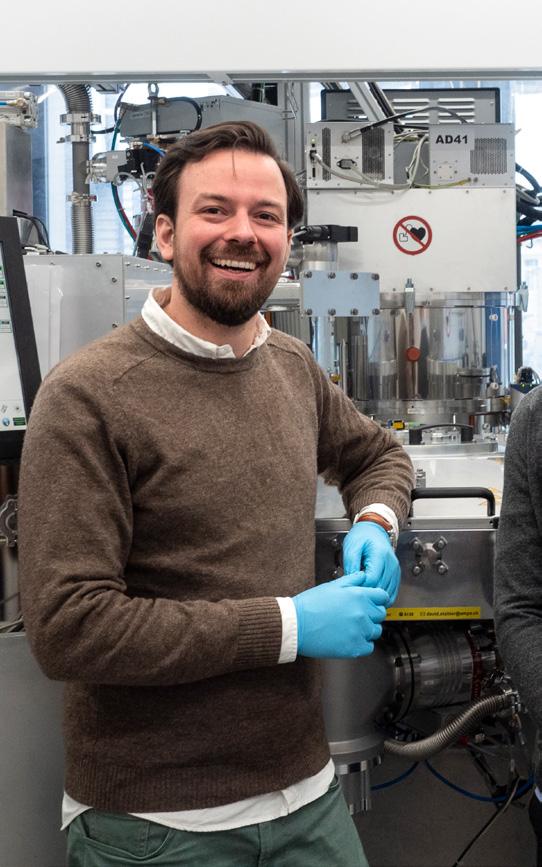
6
24
76




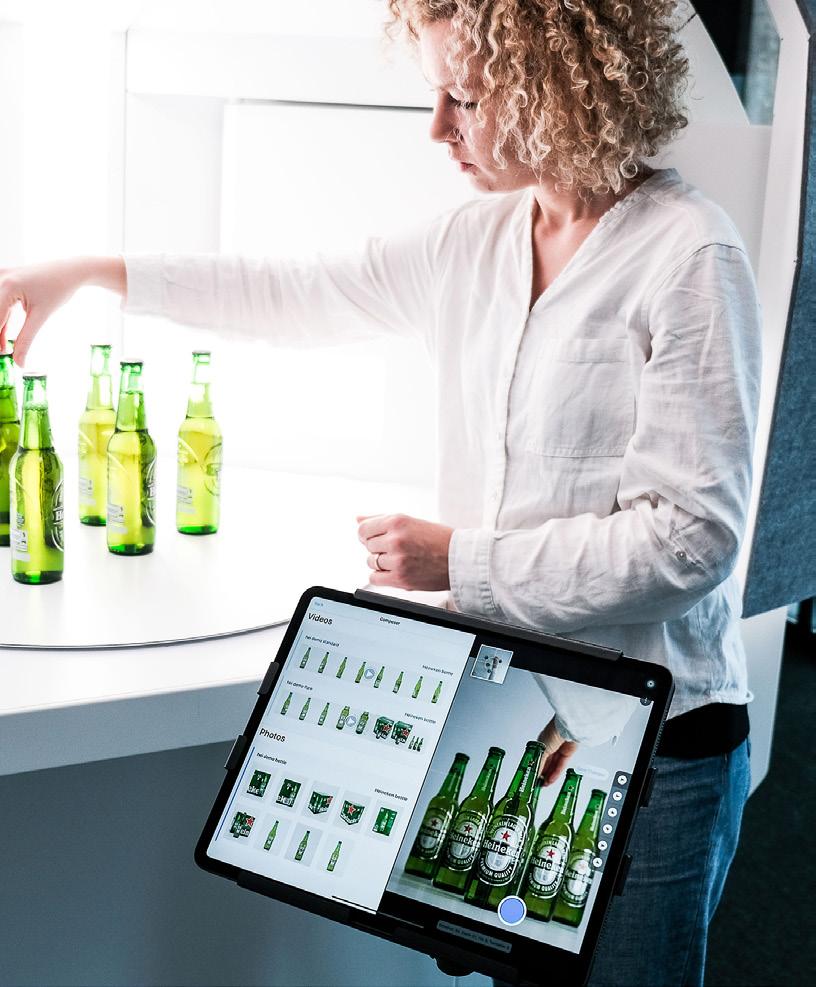
5 SEPTEMBER 2023 Meet Bavarian Econs, our startup of the month 104 Embrace the transformative potential of an innovation mindset 66 Is the UK prepared to lean into a tech-forward future with smart cities? 86 rechargeable replace lithium-ion 54 secures £3m cutting-edge steps for strategy The female-founded VC from Helsinki catalysing Europe’s green transition 96 Alliance brings together clean energy management and smart home automation 36 Driving operational efficiencies by automating troubleshooting 44


COVER STORY
Bart Coppelmans, Director of Industry
Solutions, Global Head of Supply Chain & Logistics at HERE Technologies on representing reality digitally to radically improve the way the world moves, interacts and lives.





8
HERE Technologies is a global leader in enterprise-grade location platforms and services.


he company launched over 35 years ago and created the world’s first digital map –today it offers truly global coverage as the world-leading location data and technology company.
In the four decades since HERE launched, it has gone from creating static, physical representations of the world around us to enabling advanced, dynamic and dataorientated location services and technologies providing real-time
insights to modern users and businesses. HERE has a commanding presence in several verticals, spanning industries including automotive, transport and logistics (T&L), mobility, manufacturing, retail and the public sector. Beyond the company’s own dedicated platform and tools, its technology and solutions are ‘under the hood’ for a multitude of applications around the world.
Here to tell us more about the company’s innovative approach to location
9
intelligence which empowers its users to optimise their businesses, transform data systems, enhance supply chain visibility and ultimately strive for a more sustainable future is Bart Coppelmans, Director of Industry Solutions, Global Head of Supply Chain & Logistics at HERE Technologies.
Bart and his team are responsible for creating industry and growth strategies in key verticals,
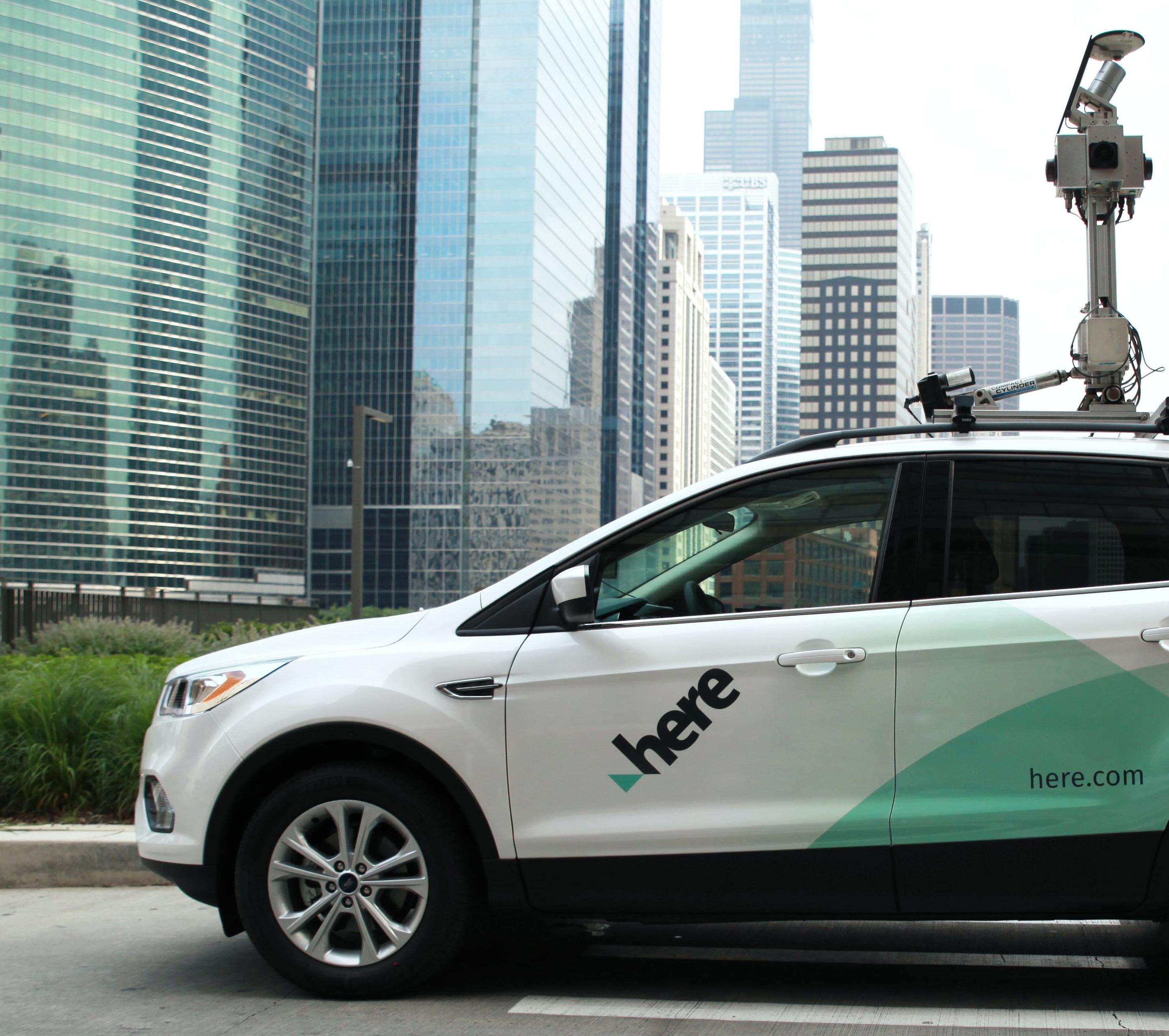

consulting with customers and partners on how HERE can support them in overcoming their challenges by building new propositions for clients or developing joint projects with them.
“We are customer-facing and incredibly focused on supporting our customers and partners overcoming challenges in the transport and logistics (T&L)
10
space by implementing location technology,” begins Bart. “When we see a trend in the market or a need from our customers, we incorporate that back into our internal product portfolio roadmap. Our responsibilities don’t stop there – we support our customers while implementing new propositions into the market through close collaborations. Partnerships are essential for us because of the importance of a
broader ecosystem as no one can do this alone. We need ecosystem partners both for connecting the dots and having our solution services embedded into broader propositions and software applications.”

HERE Technologies works with its partners and customers to help optimise their operations. From using its geocoding and search tool to identify locations and determine if deliveries have arrived, to planning and analysing optimal trucking routes and calculating estimated arrival times or total costs of transportation – HERE Technologies


11
Bart Coppelmans, Director of Industry Solutions, Global Head of Supply Chain & Logistics
empowers its customers to make informed decisions while planning, distributing and analysing their operations in a way that improves efficiency and effectiveness.
One of the crucial areas HERE Technologies supports its partners and customers is with planning, optimisation, monitoring and driver support solutions.
“Our goal is to help players find the most efficient way to deliver their goods utilising our truck routing as well as tour planning and optimisation tools,” says Bart. “Our diverse range of tools supports clients in several ways. For instance, imagine a scenario where your vehicle is out on a job and you get a last-minute order from a customer that wants sameday delivery, and you want to meet your service level agreement (SLA) while also delivering on time. Our platform offers dynamic replanning, so customers know which vehicle might need to be recalled to the warehouse, if they need to adjust their planned route to take a detour and what impact will this ultimately have on the actual delivery time.
customers with accurate routing. How long will it take drivers to reach a destination? What is their estimated arrival time and will delays or traffic impact it? Do they need to reroute to save time and still arrive when their recipient expects? We assist drivers out there in the field with accurate driver navigation, alerting and support. But we also help the back office by providing accurate up-to-date fleet location overviews and sending alerts if ETAs change.
“Lastly, our planning optimisation and ETA solutions help our clients operating in urban areas which are becoming increasingly congested. If you look at urban delivery systems and distribution within cities, last-mile delivery is getting more crowded by the day. We see growing needs among T&L companies for further optimisation before their drivers go out into the field. HERE helps them create different areas and districts, organise their networks more effectively, be more dynamic in the process and optimise delivery to their customer base accordingly.”
“Another thing we do is if certain shipments and fleets are in execution, we support our
Bart highlights the importance of HERE Technologies’ collaboration with proLogistik Group, a Germanbased international IT company specialising in warehouse

12
“proLogistik is a key partner for us in terms of using our software. They developed an end customer application called Active Smart Tour with our technology under the hood, which is focused on enabling more efficient fleet operations and transport planning”
management systems, transport management systems and fleet planning and optimisation solutions.

“proLogistik is a key partner for us in terms of using our software. They developed an end customer application called Active Smart
Tour with our technology under the hood, which is focused on enabling more efficient fleet operations and transport planning,” explains Bart.
“Smart Tour uses our mapping, geocoding and tour planning products as an algorithm to calculate multi-vehicle and multijob routing optimisation.”
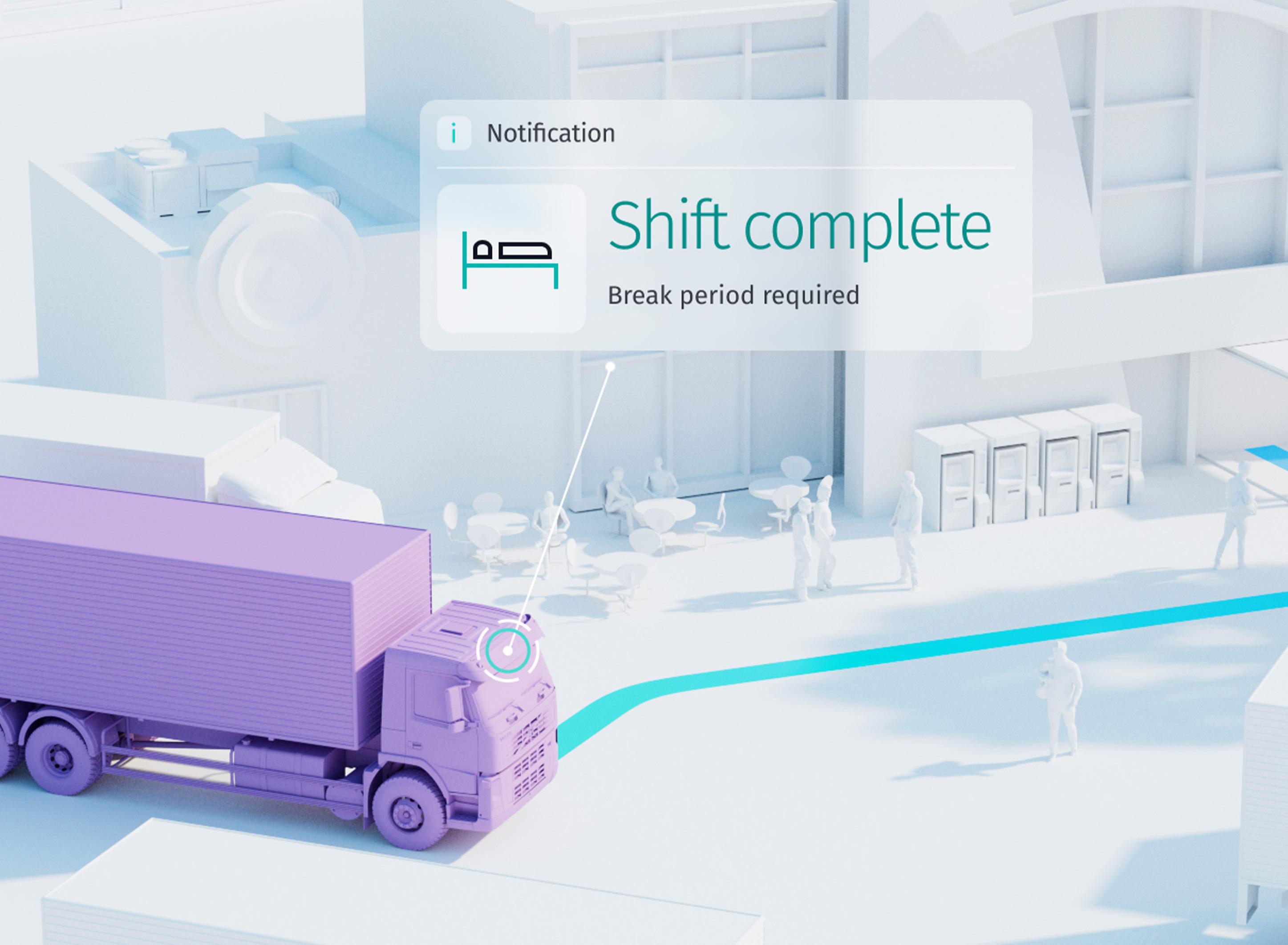
13
SAVING WORKING TIME, KILOMETRES AND MONEY IN TOUR PLANNING
Innovative route and tour planning with artificial intelligence (AI) renders the work of a freight forwarder immensely easier. Tour planning is subject to great challenges today after all. The sustained shortage of skilled workers makes it difficult to find experienced route planners, while the high complexity of the task is characterised by a variety of parameters such as delivery times, traffic conditions, and customer priorities. Increasing cost pressure requires optimisation of routes and resources to reduce fuel costs and minimise vehicle maintenance costs. Outdated system landscapes further strain efficiency by rendering real-time data integration and automation difficult. Large amounts of knowledge in route planning also are distributed among just a few heads, typically leaving a company if those employees depart.
TOUR PLANNING WITH AI SOFTWARE SOLUTION
• For logistics service providers in the logistics, trade and industry
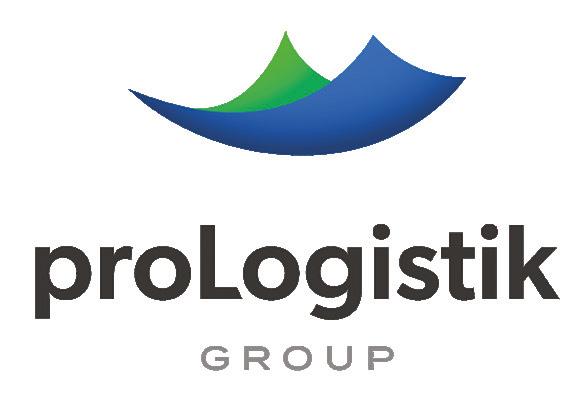
• Tour planning for local transport (deliveries and collections)

• Considering current and past influences
• Automatic planning of collection shipments in active operation
• Scheduling for support of tour planning and monitoring
• Comprehensive tour monitoring
The active smart tour transportation software offers a solution to the challenges described. It uses selflearning algorithms for optimal route planning based on coordinated destinations. The software contains important parameters from the transport management system (TMS), such as fleet, vehicle availability and driver skills. Basic scheduling rules are also defined as the basis of the software’s calculations. This includes, among other things, restrictions on which areas may be served by which fleet component. In addition, optimisation targets are set for route planning, such as:
• Shortest transport distance
• Scheduling of all orders
• Balanced use of the vehicle fleet
• Optimal cost-benefit ratio
The artificial intelligence then takes over all further tasks. It will consider not only the available resources but also delivery windows, real-time traffic data, goods receiving times and evaluation of historical traffic flows. Using this as a basis, the software compiles a complete route schedule. A dashboard will display the most important key figures for planning, for example the number of tours, tour status and trip kilometres. The dispatcher can also view the shipments of each individual tour and easily adjust the schedule with a drag and drop function.
The software shows bookings for individual shipments as well as estimated times of arrival (ETA) and the probable unloading time per stop in an overview. The dispatcher can change both the stop sequence within a tour and the tour assignment of individual shipments based on these values. The calculation will be adjusted to any manual change immediately.
Once the vehicles are on the road, the dispatcher can follow their route progress in real time using the monitoring function. In this process, ETAs are recalculated continuously, and the dispatcher will be informed proactively if there are any deviations from the plan. Orders received during the day can also be scheduled completely automatically using the algorithm in the monitoring feature.
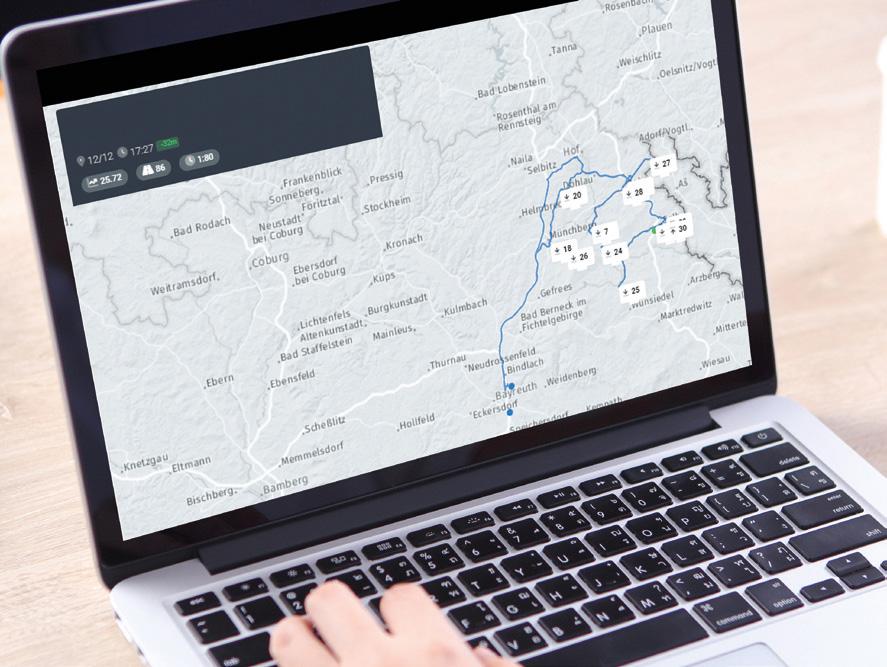

AUTOMATED AND EFFICIENT FUNCTIONS
• Automatic planning of tours under consideration of pre-defined restrictions
• Constant updates of the expected arrival and departure times (ETA)
• Monitoring of the tour progress in tour monitoring
• Automated planning of collection shipments
• Simple connection to any existing third-party software possible via standard web service interface
• Individual specification of optimisation targets by route, time or costs
• Resource planning on driver and vehicle levels
AI DELIVERS SUPERIOR RESULTS
• Considerable cost savings of up to 30 per cent through resource and route optimisation

• Time savings in route planning of up to 90 per cent
• CO 2-savings due to shorter distances
• Relief of the dispatchers through automated route formation
• Multi-level notification on progress to the final recipient
• Adjustment of running tours in real time
• Consideration of real-time traffic information and weather data
MAKE A FREE CONSULTATION APPOINTMENT >


16
Bart elaborates on some of the ways HERE Technologies leverages location intelligence to optimise business operations and help their clients overcome the challenges of a siloed data landscape.


“Let’s take the T&L industry as a demonstrative example,” explains Bart. “There are many different stakeholders involved and there are several layers of subcontracting to consider. If you have a company that wants to transport a shipment from A to B, there could be eight to 10 different players involved from freight forwarders through to third-party logistics providers working to get the shipment from one place to the other side of the world. We support every one of those players across their different business processes, from planning and monitoring to driver support and analytics.
“Our location services help to overcome the challenges of a siloed data landscape because we operate as a horizontal player reconciling all the different parties involved, including the various transport
17
management, fleet management, planning and driver application systems they might be using. Our location platform acts as the glue and central source of location truth supporting them simultaneously, making it easier to connect these seemingly disparate systems or players because we have built several data connectors and data integration layers.
“It all starts with our partner’s and customer’s operational data. Often clients have multiple systems in place across a certain region. This is a challenging topic because it's hard for them to make connections even if the data is high-quality. That's where we come in. We support our customers with a database and tools like geocoding, search and autocomplete mechanisms to improve accuracy for planning purposes. We also have tools and support in place to help our customers improve the quality of the data gathered even further.”
Bart describes how HERE Technologies embraces pragmatism in its service provision by identifying growing needs among its customers and adapting its offerings accordingly.


“We have our base map and base database that can display a range
of attributes,” says Bart. “But we now also see a growing need among users for customising the experience. They might want to work with their own operational data, customer addresses or points of interest for example. So, we are opening up our platform environment and our tools so we can support customers by connecting their operational data with the latest location intelligence data, services and technology
18
– customised and tailored to fit their core operations and business needs.”

One of the recurring conversations Bart has with customers focuses on how HERE Technologies' location data and technology can enhance their supply chain visibility and lead to benefits for businesses.
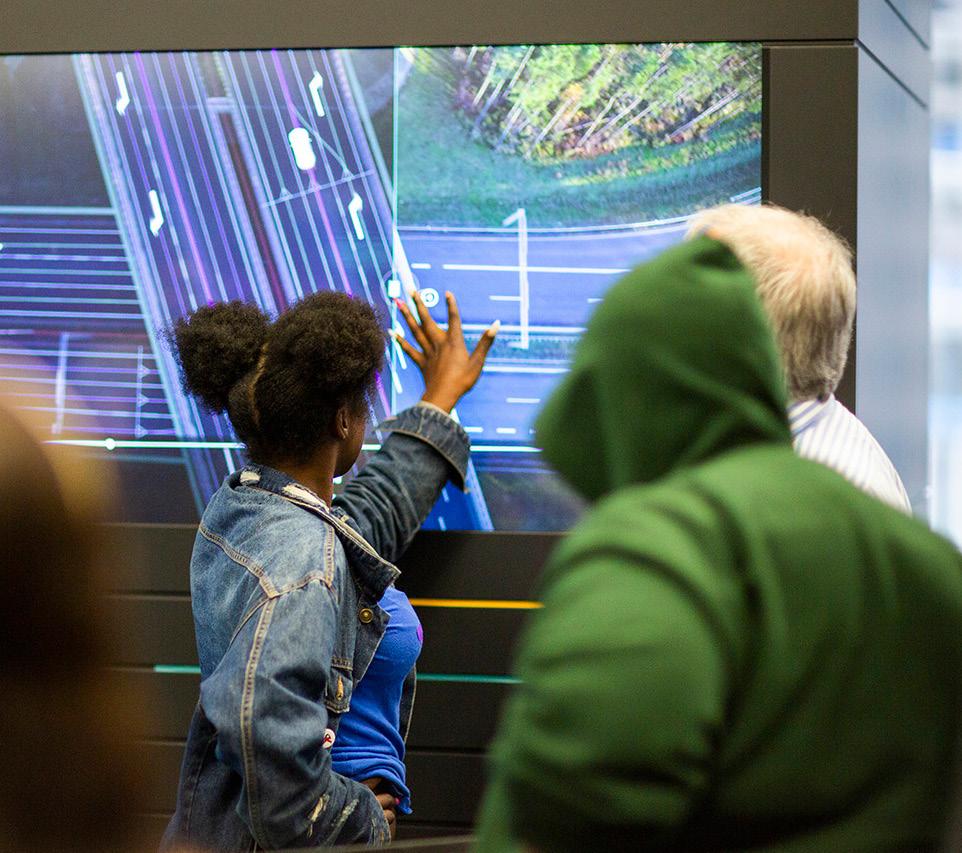
“In general, if you have better visibility and control of your
shipments, assets or vehicles, it improves your bottom line by reducing costs and waste,” explains Bart. “If customers identify certain inefficiencies in their process, and do so early on, they can achieve business benefits. Our platform is supporting the end-to-end workflow, thereby identifying breaks in the chain.
“To use a tangible example, users can see if they have a certain driver
19
ARTIFICIAL INTELLIGENCE AS A DRIVER OF THE FUTURE IN LOGISTICS

Artificial intelligence (AI) has recently enjoyed great media attention once more thanks to ChatGPT. AI comes into play precisely when massive amounts of data and parameters need to be evaluated since it not only maps complex relationships but can also learn from experience. Hardly any task in logistics can rival scheduling in complexity. Hardly any other area has as much potential for optimisation by mathematical calculations alone. This is because the sum of possible options for optimal planning, under consideration of all relevant parameters, exceeds the human planning horizon by far.
ADVANTAGES OF ARTIFICIAL INTELLIGENCE IN ROUTE PLANNING

• Efficient route optimisation
• Saving costs and optimising resources
• Faster deliveries and shorter waiting times
• Real-time adjustments to traffic conditions
• Better customer satisfaction
• More sustainable logistics solutions
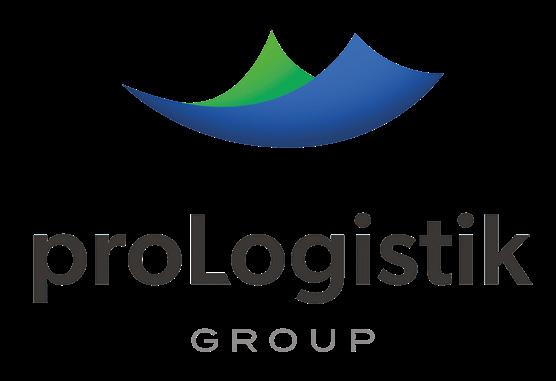
• Reduced complexity of route planning
Noticeable savings potential
Significant cost savings of up to 30 per cent are achieved in route planning by optimising resources and routes with artificial intelligence. Time savings of up to 90 per cent and noticeable CO 2 savings from shorter distances also bring about clear results.
AI-controlled scheduling at the push of a button
Active logistics customers are already using the AI software solution active smart tour today to help them plan their optimal tours. The challenge here is in putting multiple locations to be visited in an order that leads to repeat visits of only the first station while keeping the total distance travelled as short as possible and making the first and the last stations identical. Only eight stops already lead to 40,320 possible tours. 20 stops result in an incredible 2,432,902,008,176,640,000 possible combinations. This task is virtually impossible for the human mind to solve.
A self-learning algorithm, on the other hand, can solve it easily in just a few minutes. It will consider not only the available resources but also delivery windows, realtime traffic data, goods receiving times and evaluation of historical traffic flows. The smart tour software uses this basis to compile a complete tour schedule very quickly. The application also offers the possibility of monitoring all tours in real-time in order to make important decisions quickly where critical events occur. Orders received after the original planning can also be planned using the algorithm. The application will check independently which vehicles are in the vicinity of the order and calculate the best option from this.
MAKE A FREE CONSULTATION APPOINTMENT >
out in the field, finishing a delivery at a specific endpoint, they can then analyse if there are more pickups in the area in the coming days and determine the most efficient and cost-effective course of action – whether that might be to instruct them to remain on location or arrange another driver to take the job.
“Of course, there are also concrete benefits in terms of KPIs,” adds Bart. “For instance,

understand factors like dwell times of shipments or where they are, precisely. Comprehensive oversight and clear supply chain visibility allow users to compare their intentions in the planning process to what actually takes place out there in the field. This delivers benefits to their business by enabling them to adjust their operations, potentially saving millions in costs and efficiencies.”
HERE Technologies not only optimises business operations and


our customers are measuring ontime performance. But what is the actual time of arrival compared to the estimated arrival time? There's still a lot of manual back and forth in the T&L industry in terms of claims and penalties related to whether deliveries are on time – but with our location technology users have a clear timestamp for arrival.
“Last but not least, with location data and intelligence you have rich insights in general across your entire supply chain to truly
enhances supply chain visibility, the company also embraces its ability to drive sustainability and work towards a greener, safer future through the services it provides.
“Sustainability is a crucial topic for us at HERE and a fundamental development area internally,” says Bart. “We are working with car makers and commercial vehicle manufacturers to investigate how we can support their transition to greener vehicles. But we also develop the tools in our platform to
21
“We offer customers tools to profile their vehicles within our platform so they not only see estimated arrival times but the overall financial cost and emissions outputs from journeys, adjusted to the specific details of their fleets”
enhance sustainability, for instance with electric vehicles (EVs).

“EVs have different total mileage ranges and considerations in terms of factors like total load capacities and more,” explains Bart. “Customers have to organise,
CASE STUDIES
Built with HERE: Active Logistics > HERE Tour Planning: Fleet modernisation and active logistics >

HERNAV: Driver application powered by HERE >
plan and execute transportation accordingly and we support our users by helping them adjust with optimised EV routes, plotting recharging stations and other last mile delivery considerations, for instance.
“We offer customers tools to profile their vehicles within our platform so they not only see estimated arrival times but the overall financial cost and emissions outputs from journeys, adjusted to the specific details of their fleets. This allows businesses to calculate their impact on the environment and emission footprint, which they can then factor into their planning and optimisation processes. In the near future, I hope to see the industry getting rewarded for adopting solutions where they can optimise
22
routes based on a greener emission footprint.
ADDED VALUE
“We welcome the fact that sustainability is rising higher and higher on the strategic agenda in the industries we serve and that we are in a strong position to help our users strive towards greener, safer and more environmentally beneficial goals that protect our future.”
Wrapping up our discussion, Bart stresses the importance of industry collaboration – vertically, but also horizontally.
“If you look at the transport and logistics industry, and other global industries in general, I think we need more organisational and operational level collaboration,” insists Bart. “There are still a lot of players working in silos with their operations. Of course, these companies have to consider margins and be realistic when they’re offering competing services – but I think that if we want to overcome global challenges, we really need that transparency and end-to-end collaboration across the board.”
Learn more about HERE Technologies at their website here.com.
PODCASTS
Bart recently listened to a fascinating podcast called ‘Exploring the Money Trail with Mckinsey’ by McKinsey and Maersk Growth.
“This episode of the podcast I found particularly fascinating because it engaged with investments in supply chain technology, the rise of startups and the industry areas where the most progress is unfolding,” summarises Bart.
For readers interested in learning more about supply chain digitisation and the role of location technology within it, Bart recommends listening to a recent Supply Chain Brain podcast featuring his colleague Charlie Maynard.

EVENTS
Bart is looking forward to attending and meeting the industry at the Logistics Summit Düsseldorf 2023 event, which runs on October 11-12 this year.
Connect with Bart
23
UK university launches new fintech research

Warwick Business School opens
Gillmore Centre for Financial Technology

FINTECH
launches research hub


Warwick Business School has launched the Gillmore Centre for Financial Technology, backed by £3 million funding, to spearhead cutting-edge research and innovation for the UK’s financial and technology sectors.

he new Centre will deliver GillmoreGPT, a unique index of FinTech research, a Crypto Index that tracks all crypto prices charted against inflation, mobile and platformbased fintech solutions, immersive technologies for financial literacy, as well as leading research on AI development, machine learning and fraud.

Minister for Tech and the Digital Economy, Paul Scully MP, says, “The UK is the second largest global centre for FinTech, and this new facility will serve as an incubator for a new generation of businesses and a leading hub for the latest academic research and insights.”
The Centre will be led by 25 academics and







Ram Gopal, Director of the Gillmore Centre for Financial Technology
FinTech business leaders who will drive research and development across its specialisms. The Centre has further plans to hire a number of top research fellows by the end of 2023 to continue expanding its expertise.

Academics Moris Strub, an expert in financial engineering, and Michael Mortenson, an expert in cloud computing and data analytics, have joined the Centre to add to its expertise.
They will team up with Crypto expert Amit Choudhary,


“The launch of the Gillmore Centre for Financial Technology is a landmark moment for academia and the financial and technology industries, initiating a huge growth drive for UK R&D”
ex-Polygon Labs and Co-Founder of web 3.0 product developer ChainSolid Labs, and former Nationwide financial risk and regulation expert John Curtis, who joined the Gillmore Centre of Financial Technology as research fellows.
The Centre will also act as a platform for industry collaboration
projects, virtual and augmented reality teaching, and applications of advanced generative AI in financial services.

The lab area features stateof-the-art computing facilities, advanced wall screens, virtual reality capabilities, as well as access to AI and data analytics software.

Ram Gopal, Director of the Gillmore Centre for Financial Technology, says, “The launch of the Gillmore Centre for Financial Technology is a landmark moment for academia and the financial and technology industries, initiating a huge growth drive for UK R&D. We’ve seen over recent months the rapid development of emerging
technologies, while the evolving economic situation requires innovative thinking and worldclass research pioneers to shape the UK’s growth path, which is what we’re here to provide.
“The Gillmore Centre for Financial Technology will act as a beacon for industry-leading research across fields such as
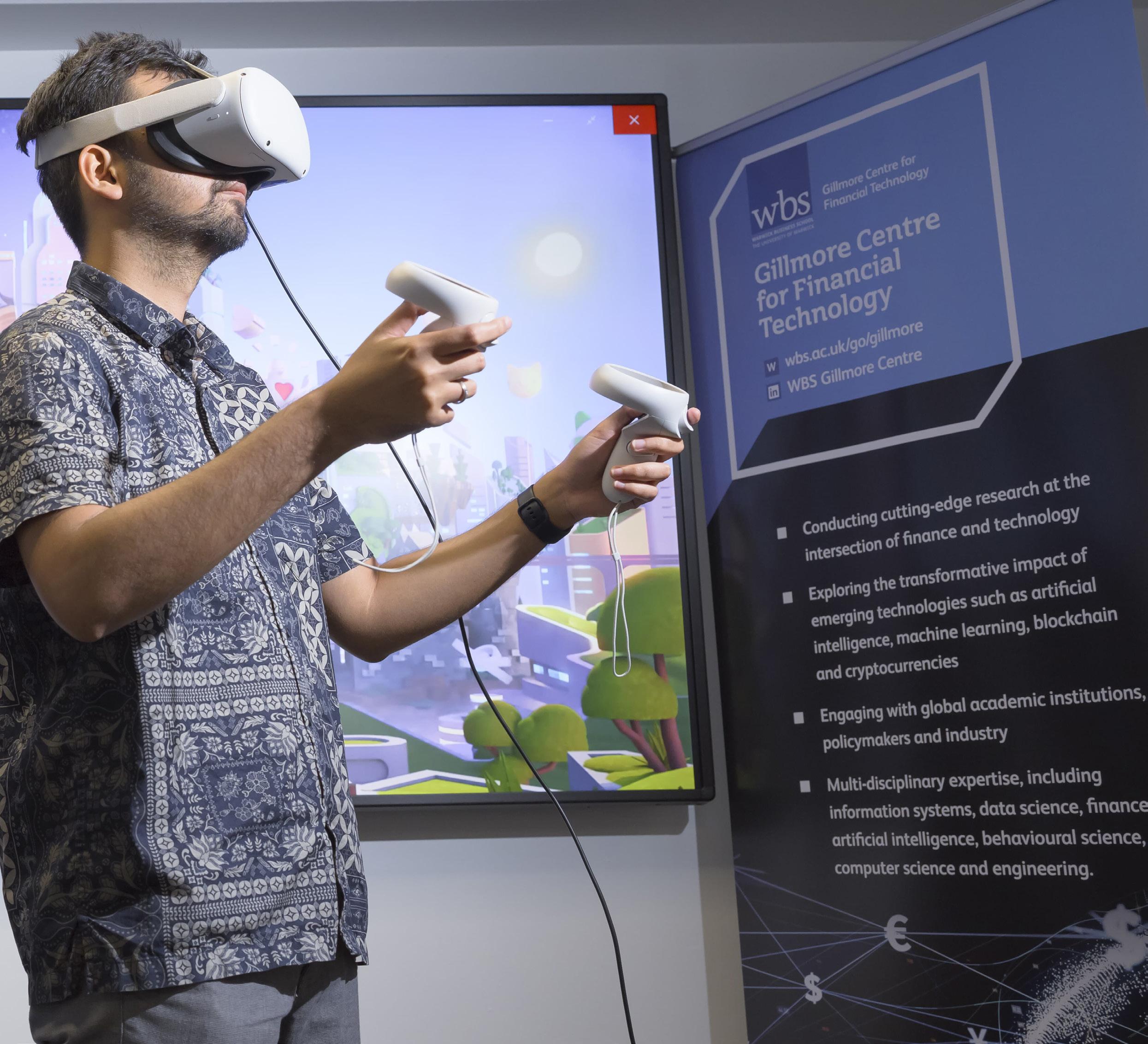

AI, blockchain and machine learning, helping to elevate government policy, inform regulators and guide businesses through the safe development of these areas.


“The UK is primed to become a global hub for financial technology and the Centre closely aligns with the government’s aims of becoming a science and technology superpower.”
The Gillmore Centre for Financial Technology has been set up following a £3 million donation from Clive Gillmore, an alumnus of Warwick University and CEO and Group CIO of Mondrian Investment Partners.
Source: Warwick Business School
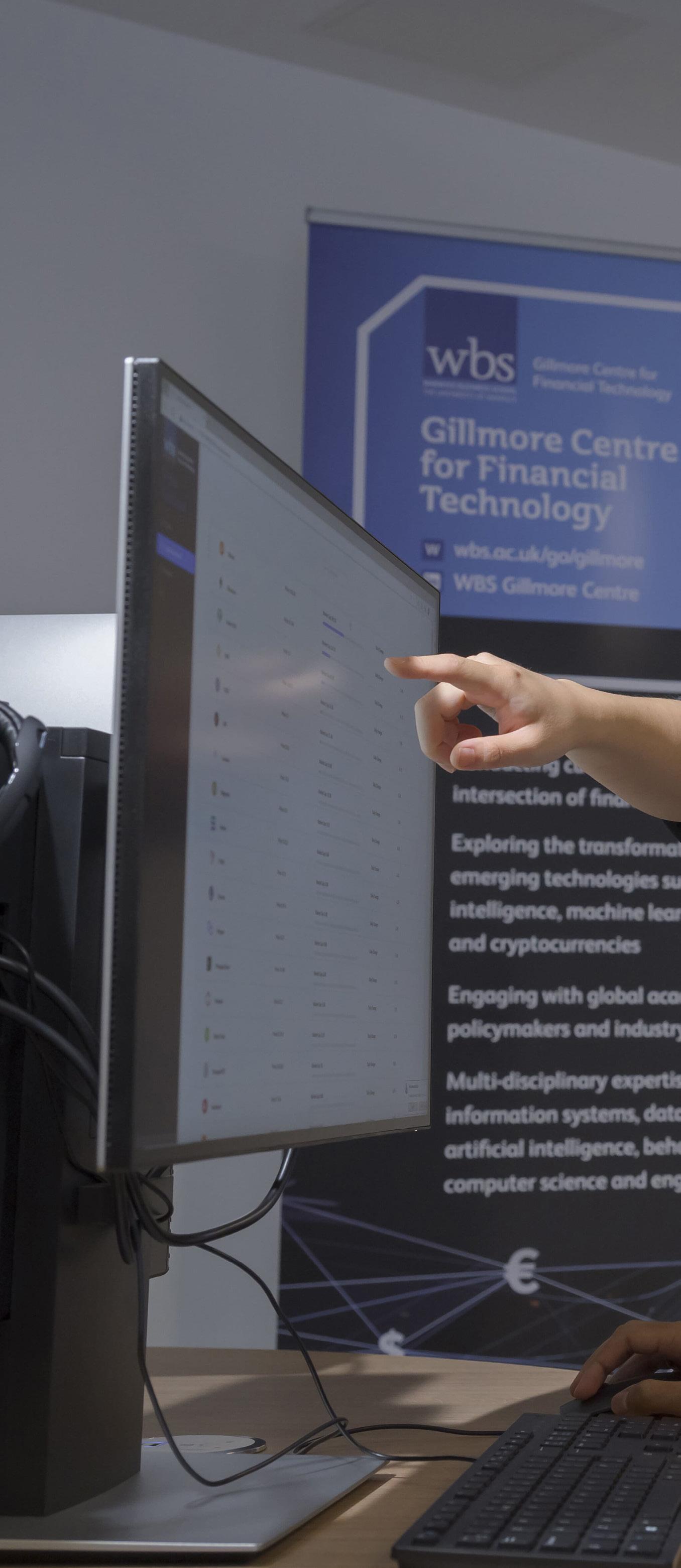
“The Gillmore Centre for Financial Technology has been set up following a £3 million donation from Clive Gillmore”


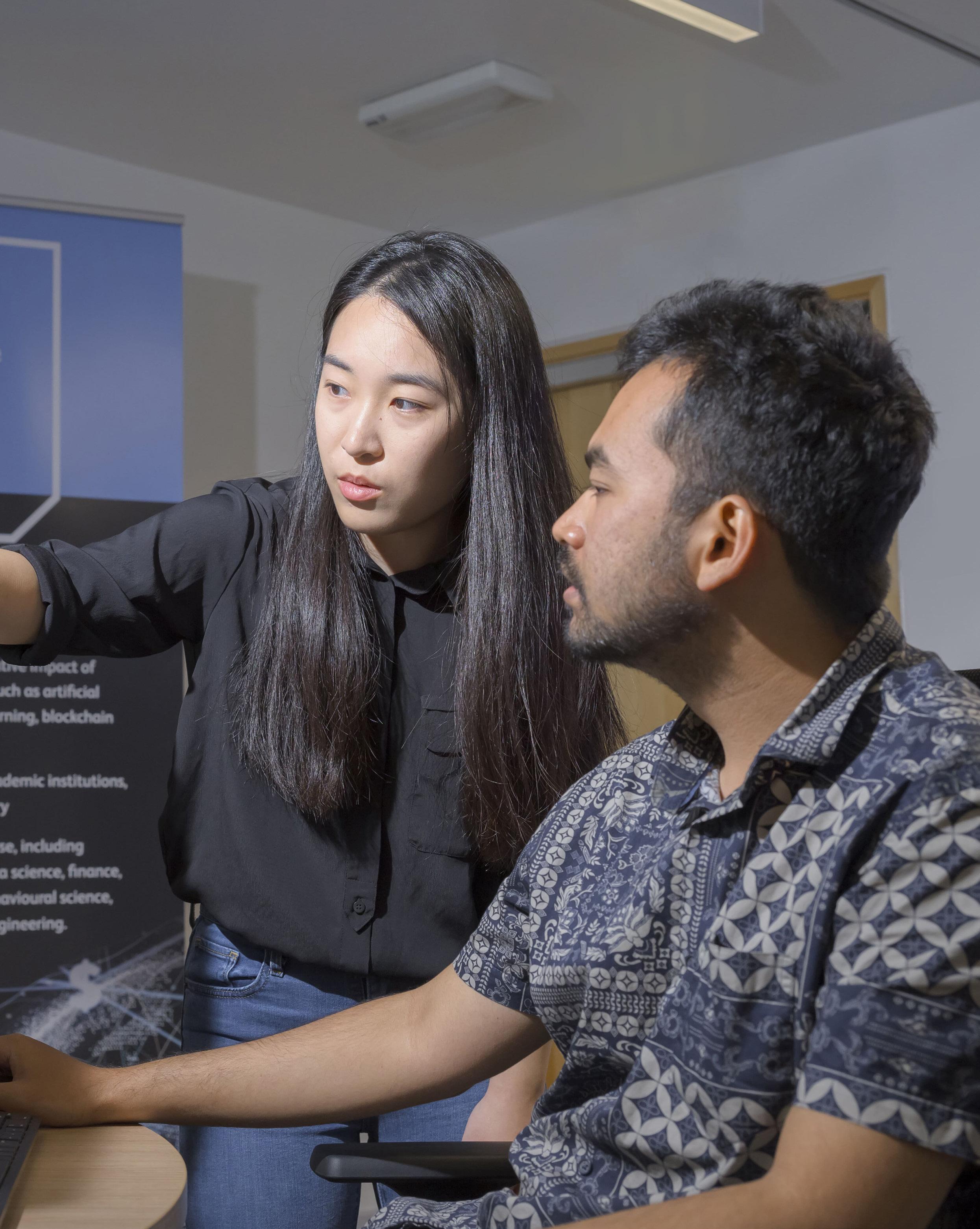





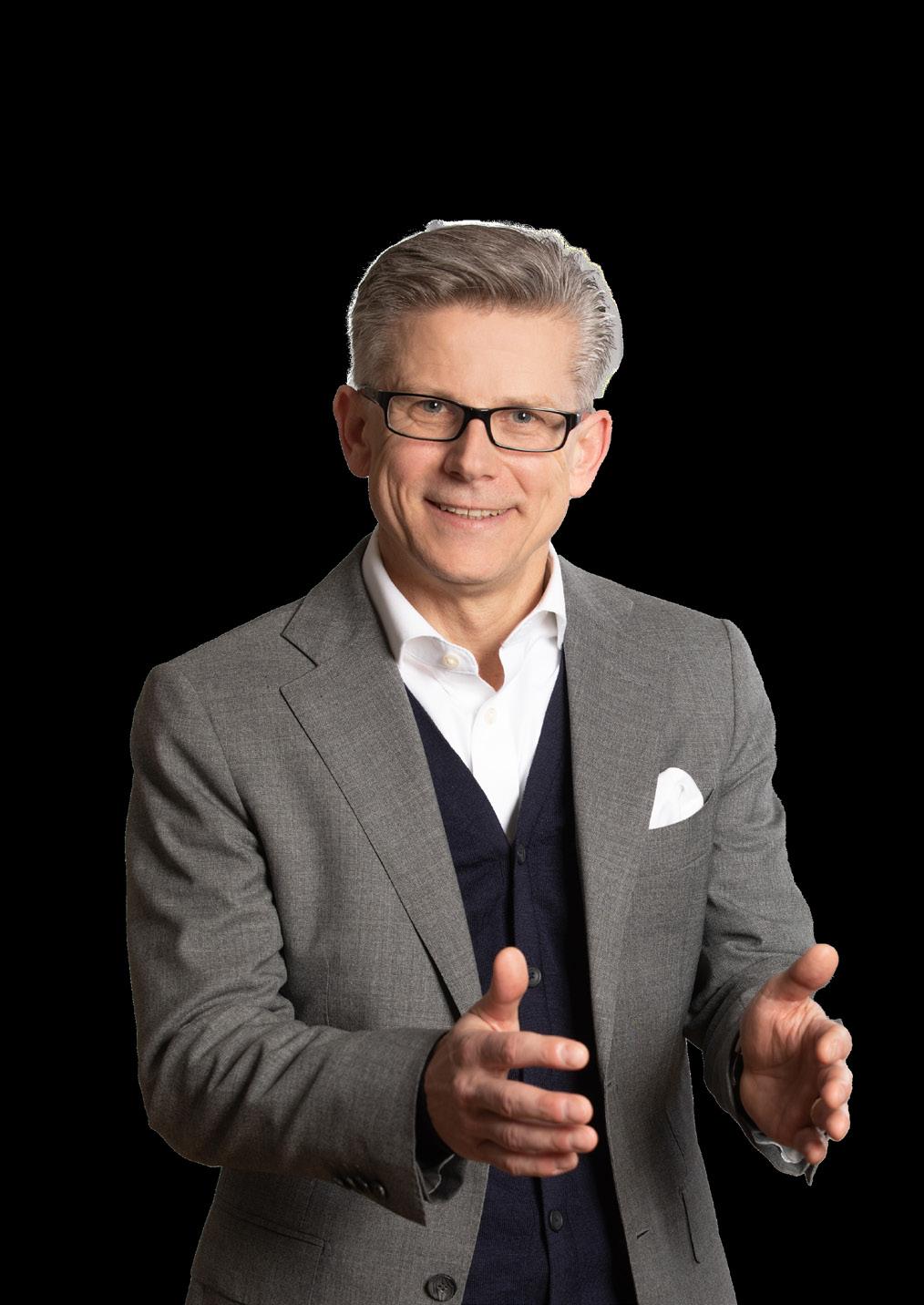





ALSO IN THIS ISSUE
"The team were professional and diligent throughout"
Leigh Feaviour, CTIO for BT’s Supply Chain
"Absolute pleasure working with the Digital Innovation team"


Mun Valiji, Chief Information Security Officer at Sainsbury’s
"A highly professional approach"
Andy Brierley, Vice President, Cloud Application Modernisation at IBM
"Digital innovation Magazine is a very flexible and professional team"
Kim Larsen CTIO, T-Mobile Netherlands

STRATEGIC ALLIANCE TO AUTOMATION AND CLEAN


SMART HOME
PIONEER SMART HOME

ENERGY MANAGEMENT
Zendure and Shelly Group join forces to leverage both companies’ R&D capabilities.

CLEAN
ZENDURE, A FAST-GROWING ENERGYTECH START-UP, AND SHELLY GROUP, A SPECIALIST IN IOT DEVICES FORMERLY KNOWN AS ALLTERCO ROBOTICS, HAVE ANNOUNCED THEIR STRATEGIC PARTNERSHIP FOR A CLEAN ENERGY MANAGEMENT ECOSYSTEM FOR END-USERS.


Partnership with Unified Vision
Zendure and Shelly are collaborating on a comprehensive Clean EnergyTech platform that meets the needs of communities and families. As a leader in the automation of homes and buildings, Shelly is known for providing smart and innovative solutions. With a focus on energy efficiency, Shelly creates modular devices that prioritise user
preferences down to the smallest details.

By incorporating Zendure's innovative products, such as SolarFlow and SuperBase V, with Shelly's smart devices, this collaboration aims for a unique position in the market. The target is to capture a significant market share in the EU balcony energy storage system market.
“The partnership with Zendure embodies our

values of flexibility, exceptional value and community-driven innovation,” says
Ivan Mihaylov, Chief Commercial Officer at
Shelly Group. “Together, we aim to advance a customer-centric home automation platform.”


Seamless Integration and Collaboration
To ensure seamless interoperability between Zendure and Shelly products, Shelly will provide API access for cloud-to-cloud integration. Zendure will also focus on enhancing compatibility through software development.
Both companies agreed to engage in joint product development activities to improve data accuracy and create intelligent applications within the clean energy management ecosystem. Additionally,
“Together, we aim to advance a customer-centric home automation platform”
Ivan Mihaylov, Chief Commercial Officer at Shelly Group


the partnership includes crosssales on identified e-commerce channels, co-marketing campaigns and joint market entrance initiatives.
Glimpse into the Future
This partnership between Zendure and Shelly represents

“Through collaboration, we aim to reshape the industry and accelerate a sustainable future”
Bryan Liu, CEO of Zendure
a glimpse into the future of smart home energy management. By merging their expertise, they are poised to become gamechangers in the EnergyTech sector, offering a clean EnergyTech platform that supports communities and families.

“We're excited to partner with Shelly,’ says Bryan Liu, CEO of Zendure. “Through collaboration, we aim to reshape the industry and accelerate a sustainable future.”
For more information or production inquiries, please visit zendure.com or allterco.com.
Source: Zendure DE GmbH
NEW PROOF-OF-CONCEPT AUTOMATES TROUBLESHOOTING TO REDUCE


TECH
RESOLUTION
Infovista and BT to showcase new automation use case for fixed voice assurance and operations at DTW23




AUTOMATES RESOLUTION TIME
INFOVISTA, THE GLOBAL LEADER IN NETWORK LIFECYCLE AUTOMATION, HAS ANNOUNCED A COLLABORATIVE EFFORT WITH BT ON A PROOF OF CONCEPT AIMED AT DEVELOPING A NEW AUTOMATED ROOT-CAUSE ANALYSIS (RCA) USE CASE FOR ITS FIXED VOICE SERVICES.
he use case, which will be showcased for the first time at TM Forum’s DTW23, demonstrates how CSPs such as BT can realise substantial operational efficiencies. Infovista predicts that the technology will be able to reduce resolution times for CSPs by more than two-thirds allowing for enhanced customer satisfaction.
The aim of this use case is to expedite response times
by swiftly identifying the root cause of customer or service disruptions, thus reducing Mean Time to Resolution (MTTR). This is achieved through an automated workflow for issue detection, analysis and alarm generation within BT's trouble-ticketing system.
The alarms are enriched with pertinent data, not only streamlining troubleshooting of network, service and subscriber issues but also trimming operational costs by


“ALARMS ARE ENRICHED WITH PERTINENT DATA, NOT ONLY STREAMLINING TROUBLESHOOTING OF NETWORK, SERVICE AND SUBSCRIBER ISSUES BUT ALSO TRIMMING OPERATIONAL COSTS BY ELIMINATING THE NEED FOR INITIAL LEVEL 1 SUPPORT AND FAST-TRACKING DIRECT ESCALATION TO THE APPROPRIATE LEVEL 2 TEAMS WHERE NECESSARY”




eliminating the need for initial level 1 support and fasttracking direct escalation to the appropriate level 2 teams where necessary. This shifts operations from manual to automated, KPI- and SLA-driven, ensuring the maintenance of service and business objectives.

“CSPs are under pressure to constantly improve the quality of experience they provide, while simultaneously reducing
operational costs,” says Franco Messori, Chief Product & Transformation Officer at Infovista. “This requires them to transform their operations to become intent- and businessdriven, using automation for business-critical processes such as customer impact analysis so that they can quickly and accurately prioritise issues and streamline their assignment to the relevant ops team.
“This use case shows how automating daily tasks can

“CUSTOMER IMPACT ANALYSIS CAN QUICKLY AND ACCURATELY PRIORITISE ISSUES AND STREAMLINE ASSIGNMENTS TO THE RELEVANT OPS TEAM”
help CSPs such as BT both drive operational efficiency and improve customer experience and satisfaction. We’re excited to be collaborating with BT on this use case and showing how our Ativa™ Suite is the engine for driving automated assurance and operations.”

“BT is committed to developing and delivering next-generation services that continue to put our
customers at the core of what we do and to deliver better outcomes,” says Reza Rahnama, MD for Mobile Networks at BT Group. “This means digitally transforming our own operations and using the power of automation across our network, infrastructure, services and operations.
“Working with the team at Infovista, this use case demonstrates how automating routine tasks and

processes delivers for both the business and our customers, and we’re delighted to be alongside them showcasing it to the industry at DTW23.”
Pre-configured automation workflows, such as RCA, customer impact analysis, alarm and trouble-ticket lifecycle management, remediation and validation, are all powered by Infovista’s assurance solution
– the Ativa™ Suite. In the case of BT, Infovista has leveraged the existing Ativa for Fixed Voice assurance solution to focus on the automation of RCA and notification, improving troubleshooting through intelligent pattern discovery, correlation, analysis and alarm generation.

When Ativa detects an anomaly associated with a specific degradation within BT's network,

“BT IS COMMITTED TO DEVELOPING AND DELIVERING NEXT-GENERATION SERVICES THAT CONTINUE TO PUT OUR CUSTOMERS AT THE CORE OF WHAT WE DO AND TO DELIVER BETTER OUTCOMES”
Reza Rahnama, MD for Mobile Networks at BT Group
it promptly raises a threshold crossed alert that triggers an automated workflow. This workflow is meticulously designed to carry out a comprehensive investigation, encompassing multi-KPI checking, RCA and contextual trace capture. Leveraging the TMF-642 Alarm Management API, the workflow then generates an alarm within
INFOVISTA WILL BE ATTENDING DTW23 IN COPENHAGEN FROM


SEPTEMBER 19-21,
2023 ON STAND 316
BT's ecosystem, enriched with all pertinent findings for streamlined troubleshooting and efficient resolution. Infovista will be attending DTW23 in Copenhagen from September 19-21, 2023 on stand 316. To arrange a meeting to see this BT use case in action, or to speak with one of Infovista’s technology experts, visit www.infovista.com/event/dtw.
Source: Infovista
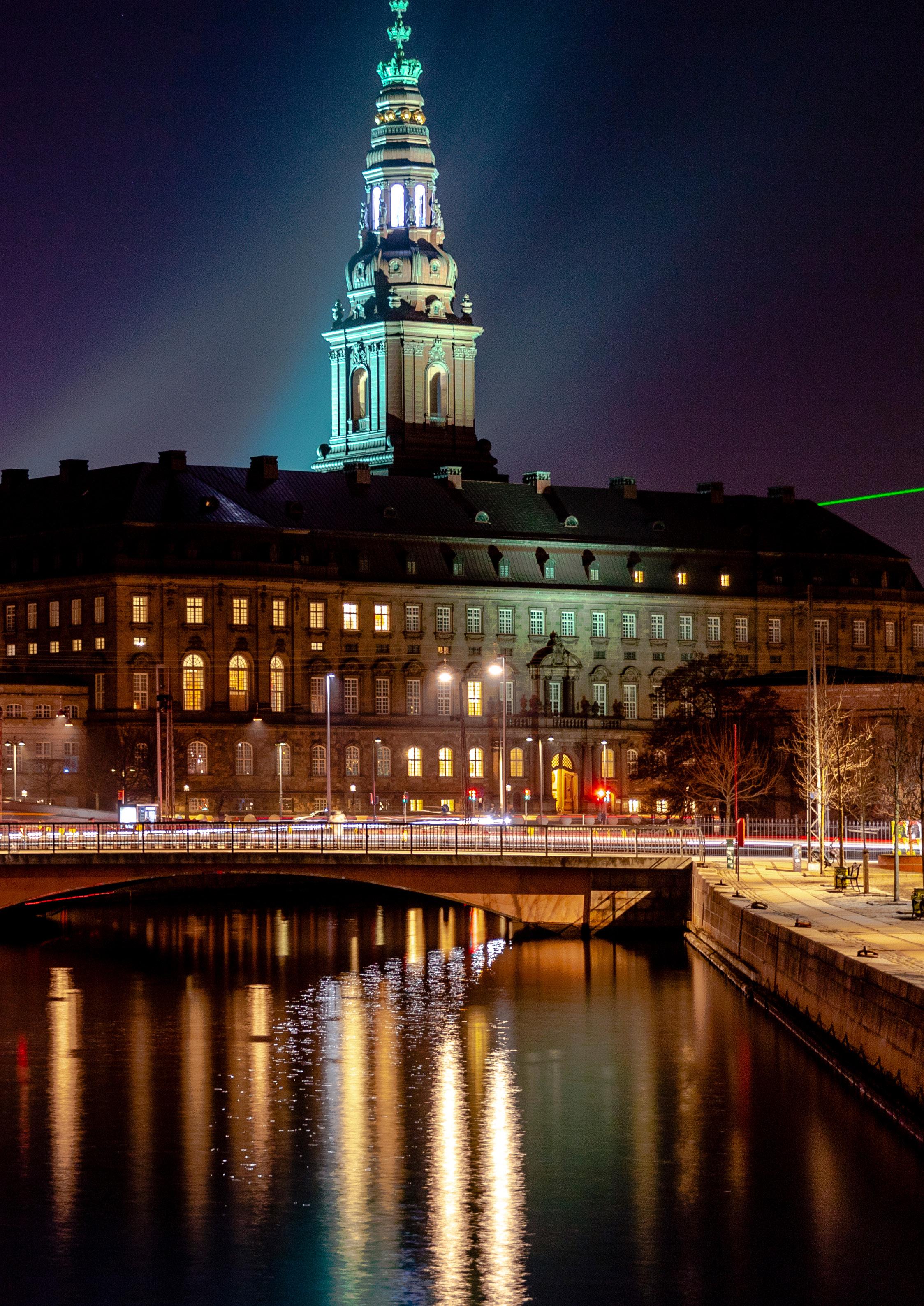

Are these thin-film alternatives to conventional the power source



54 BATTERIES
conventional lithium-ion batteries source of the future?
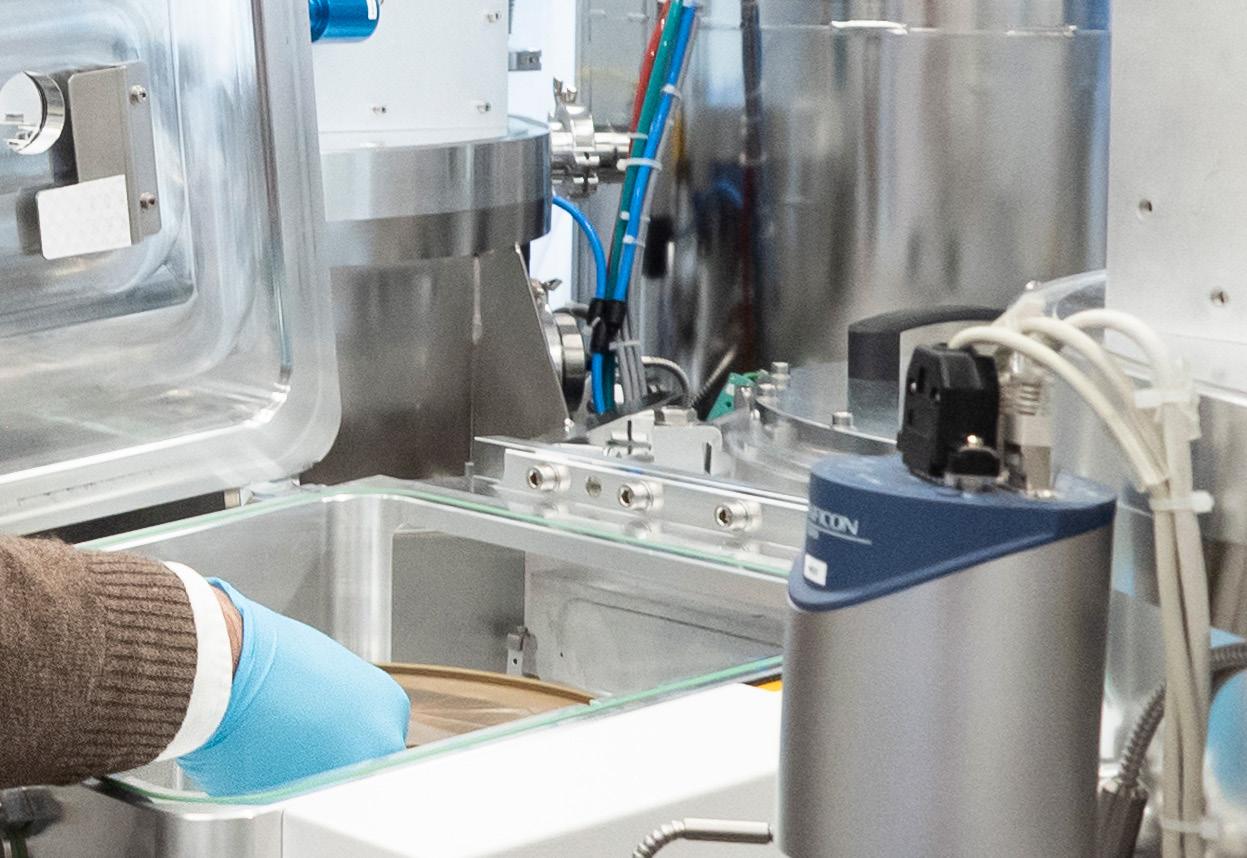
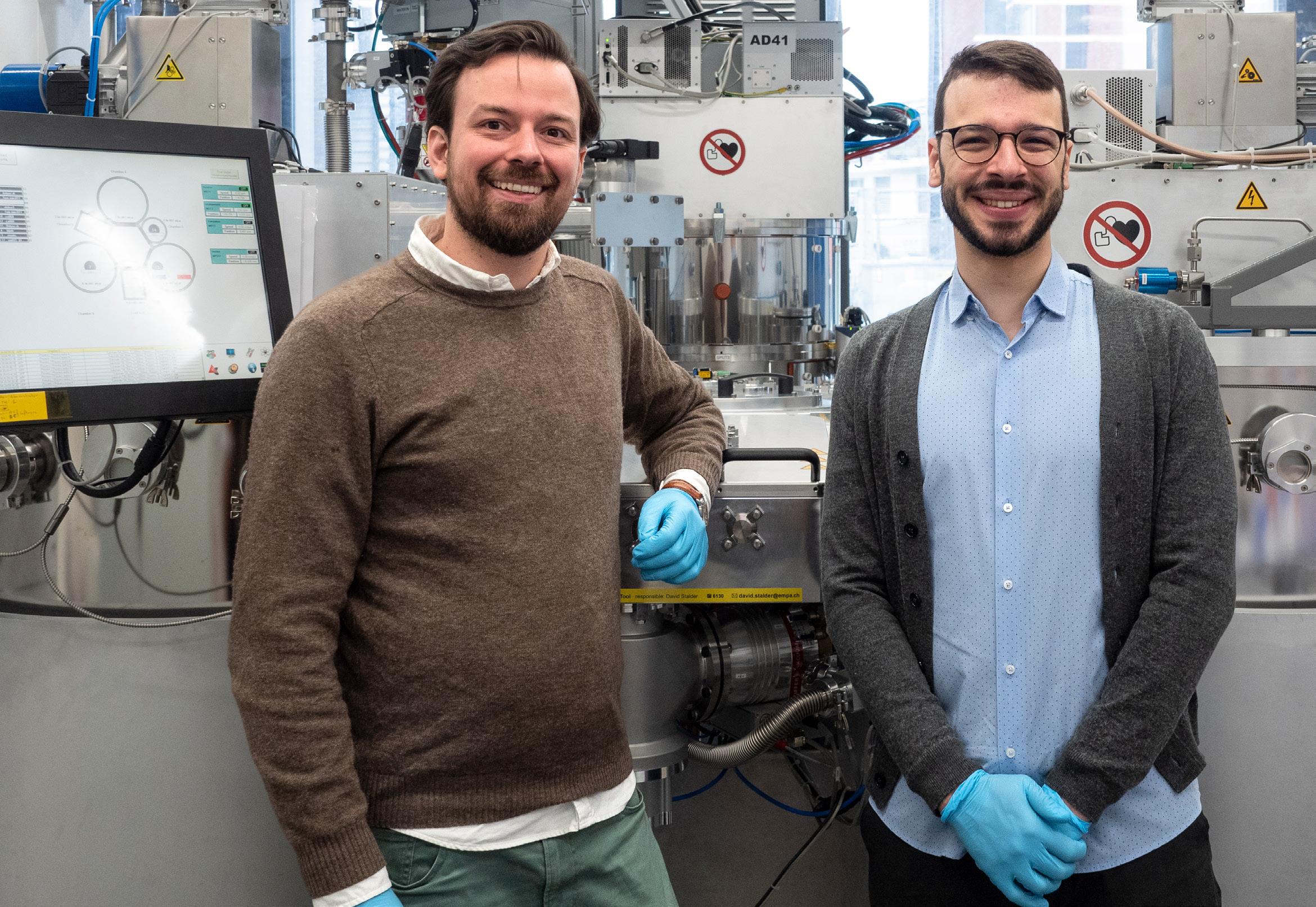

55
THE EMPA SPIN-OFF BTRY WANTS TO REVOLUTIONISE RECHARGEABLE BATTERIES.

Its thin-film batteries are not only safer and longer-lasting than conventional lithium-ion batteries, but they are also much more environmentally friendly to manufacture and can be charged and discharged in just one minute. For now, the battery is very small, but the founders have big plans for it.
Lithium-ion batteries are everywhere: from smartphones and laptops to cars and even satellites. It is currently our most mature battery technology. Yet it is not ideal for many applications. Lithium-ion batteries lose capacity with
every charge and discharge cycle, charge relatively slowly and only work well in a narrow temperature range.
According to Empa researchers Abdessalem Aribia and Moritz Futscher from Empa’s Thin Films and Photovoltaics laboratory, it is time to rethink battery technology. Compared to other existing or developing technologies, their lithium metal-based solidstate battery brings some significant advantages: it can be charged and discharged within one minute, lasts about ten times as long as a lithiumion battery and is insensitive to temperature fluctuations.
In addition, unlike lithium-ion batteries, it is not flammable –

56


57
a major advantage, because today’s rechargeable batteries are considered hazardous materials. Incorrect handling or damage to a conventional lithium-ion cell can lead to a fire that releases toxic gases and is extremely difficult to extinguish.
“By contrast, if you cut our battery with scissors, you will simply get two batteries that are half as good,” Aribia says.

Aribia and Futscher now want to bring this promising technology to market. Together with lab head Yaroslav Romanyuk, they have founded a spin-off called BTRY (pronounced ‘battery’). Aribia, who takes on the role of CTO at BTRY, had never previously thought of starting his own company. CEO Moritz Futscher, on the other hand, has been interested in startups since he was a student. The two researchers have been working together on the battery project for years and are a wellestablished team.
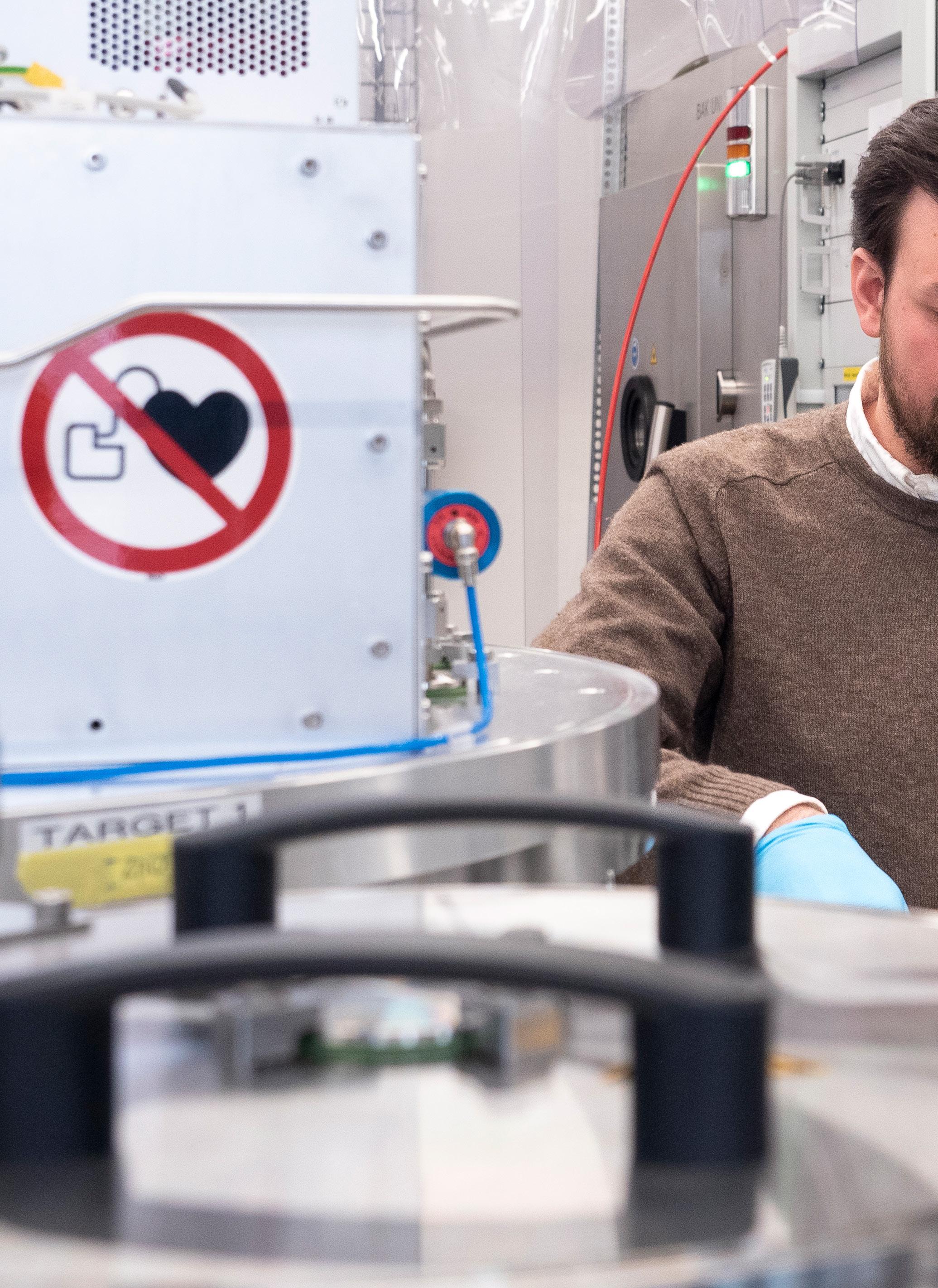
58
says Futscher.
HIGH-PRECISION MANUFACTURING

The new battery is a so-called thin-film solid-state battery. The technology itself is not new –such batteries have been known since the 1980s. However, due to the very low mass of their thinfilm components – the entire cell is only a few micrometres thick – they have been able to store very little energy so far. Futscher and Aribia have succeeded in stacking the thin-film cells on top of each other, increasing their capacity.

59
“We are convinced that our product can offer real added value,”
“CURRENTLY, OUR BATTERIES CONSIST OF ONLY TWO LAYERS OF ABOUT 1×3 MILLIMETRES. NEXT, WE WANT TO MAKE A BATTERY OF ABOUT ONE SQUARE CENTIMETRE WITH TWO TO THREE LAYERS”


60
This makes the battery very promising for commercial applications. The thin-film cells are manufactured using vacuum coating. The desired materials are atomised in a vacuum chamber to form individual atoms, which are then deposited in a precisely controlled layer on the target substrate.

“Such manufacturing methods are currently used on a large scale in the production of semiconductor chips and glass coatings,” says Futscher. “That’s an advantage for us, because the machines and know-how to manufacture our battery are largely in place already.”
The high-precision manufacturing method has an additional advantage. “In contrast to the traditional method of battery production, our method does not use toxic solvents,” explains Aribia. However, it also makes the thinfilm battery more expensive. The researchers therefore see its application primarily in products where the battery

61
only accounts for a small part of the overall cost of the device – for example, in smartphones and smartwatches or in satellites. “There, the advantages of our technology more than make up for the higher price,” Aribia states.
WANTED: INVESTORS!
The researchers are not the only ones who believe their product has a lot of potential. BTRY

was supported by Innosuisse and made it into the business incubator of the European Space Agency (ESA). In addition, Aribia received an Empa Entrepreneur Fellowship, which supports young researchers who want to found a company.
But before the first thin-film batteries launch into space or supply smartphones with electricity, there is still a lot of work

62
to do, both on the administrative and on the technical side. In the meantime, the two founders are using the equipment and facilities at Empa’s Coating Competence Center to create bigger and more powerful battery prototypes in order to show potential investors that the technology is worth backing.

Over the next two years, the researchers want to increase both
the surface area of the battery and the number of layers.

“Currently, our batteries consist of only two layers of about 1×3 millimetres,” Aribia says. “Next, we want to make a battery of about one square centimetre with two to three layers. We can’t power a satellite with that yet –but we can very well show that our technology is scalable.”
Source: Empa
63





64 Published by read the latest issue of CHAIN MAGAZINE
sister publication
Our
300+ Participants

2 5 + Speakers 10+ Sessions 2 Days


65
Madrid
WHY ENTREPRENEURS SHOULD Innovation Mindset

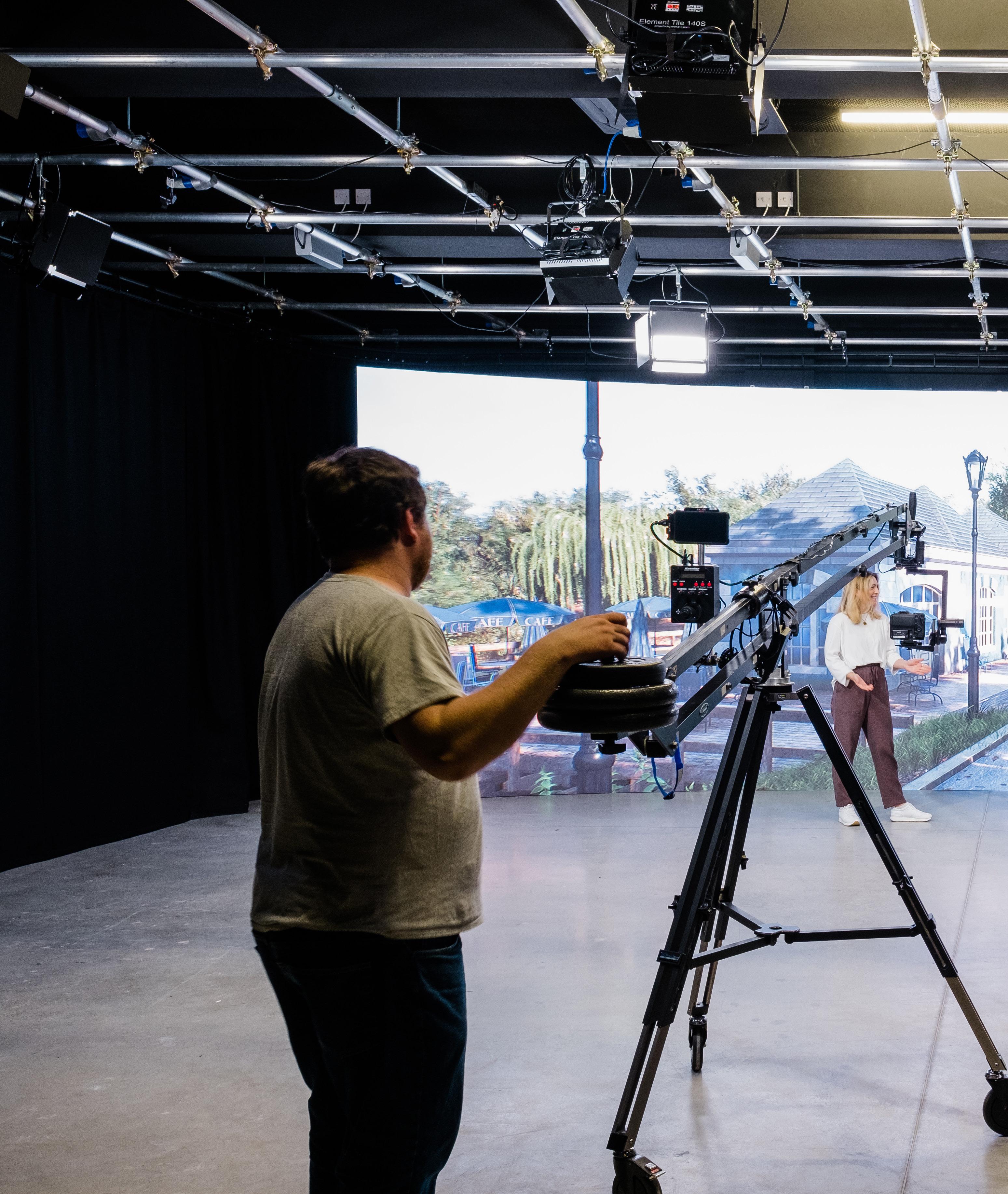
Q&A
ADOPT ANMindset
Embrace innovation to thrive as a business

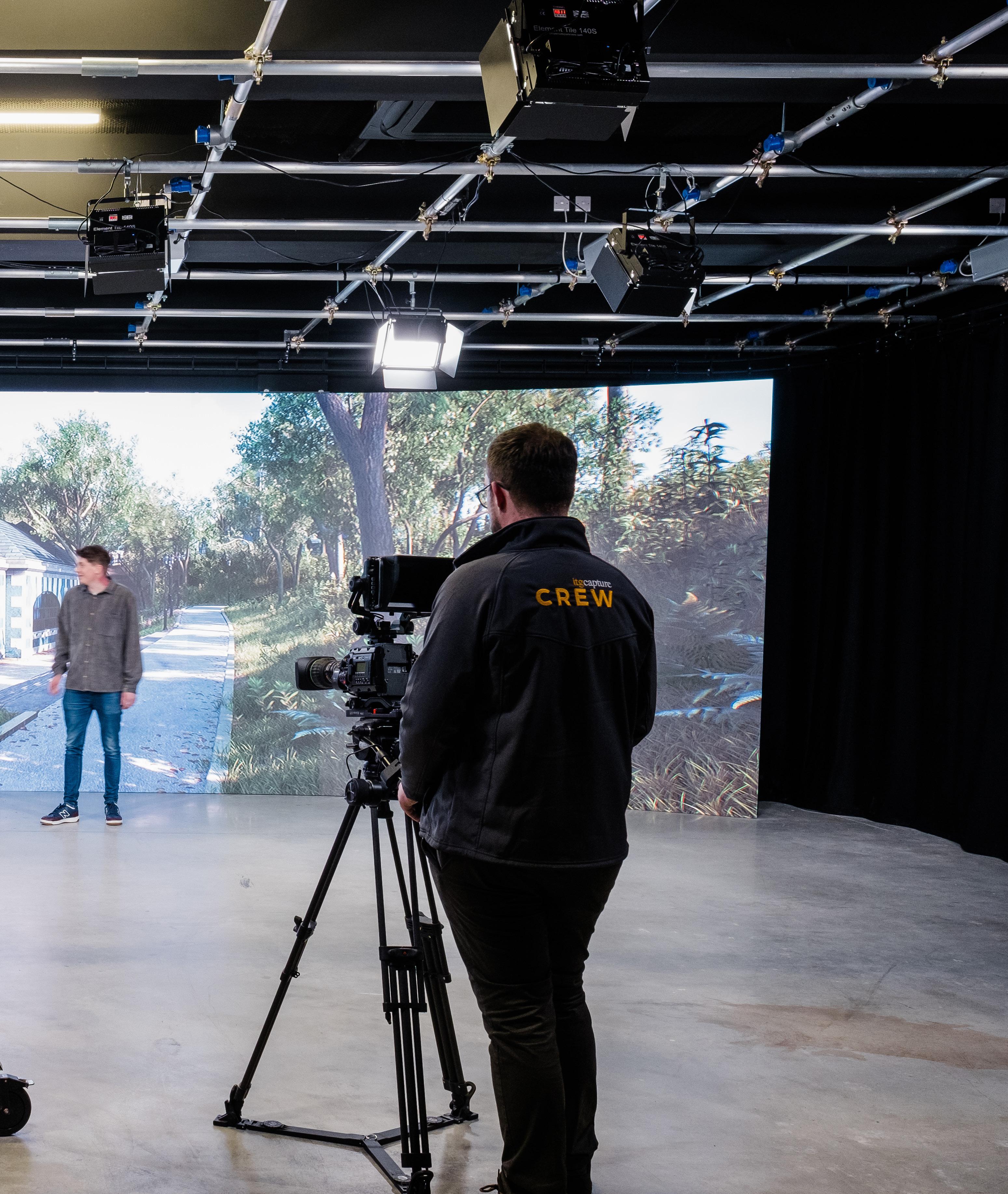
SHOULD
TODAY’S MOST USEFUL TOOLS WERE OFTEN DISREGARDED AT THE POINT OF INVENTION

BECAUSE PEOPLE THOUGHT THEY WERE IMPOSSIBLE OR PREVAILING WISDOM AT THE TIME DISMISSED THEIR VALUE AND POTENTIAL.
et some of the most radical and transformative leaps in technology propelled us forward because innovators and entrepreneurs persevered and kept an open mind to the profound potential of innovation.

But for businesses, innovation can be a daunting prospect since it often takes companies into the unknown – stepping beyond the comfort zone of business-as-usual operations and towards unfamiliar territory.
We’ve broken down some common questions and
concerns that might be holding you back from leaning into innovation, to help you tap into the transformative potential it offers entrepreneurs and businesses.
WHAT ARE SOME OF THE PERCEIVED CHALLENGES ENTREPRENEURS FACE WHEN CONSIDERING EXPLORING INNOVATION?
The key issue that entrepreneurs will come up against is the natural reluctance from executives and investors when it comes to backing new ideas.
68
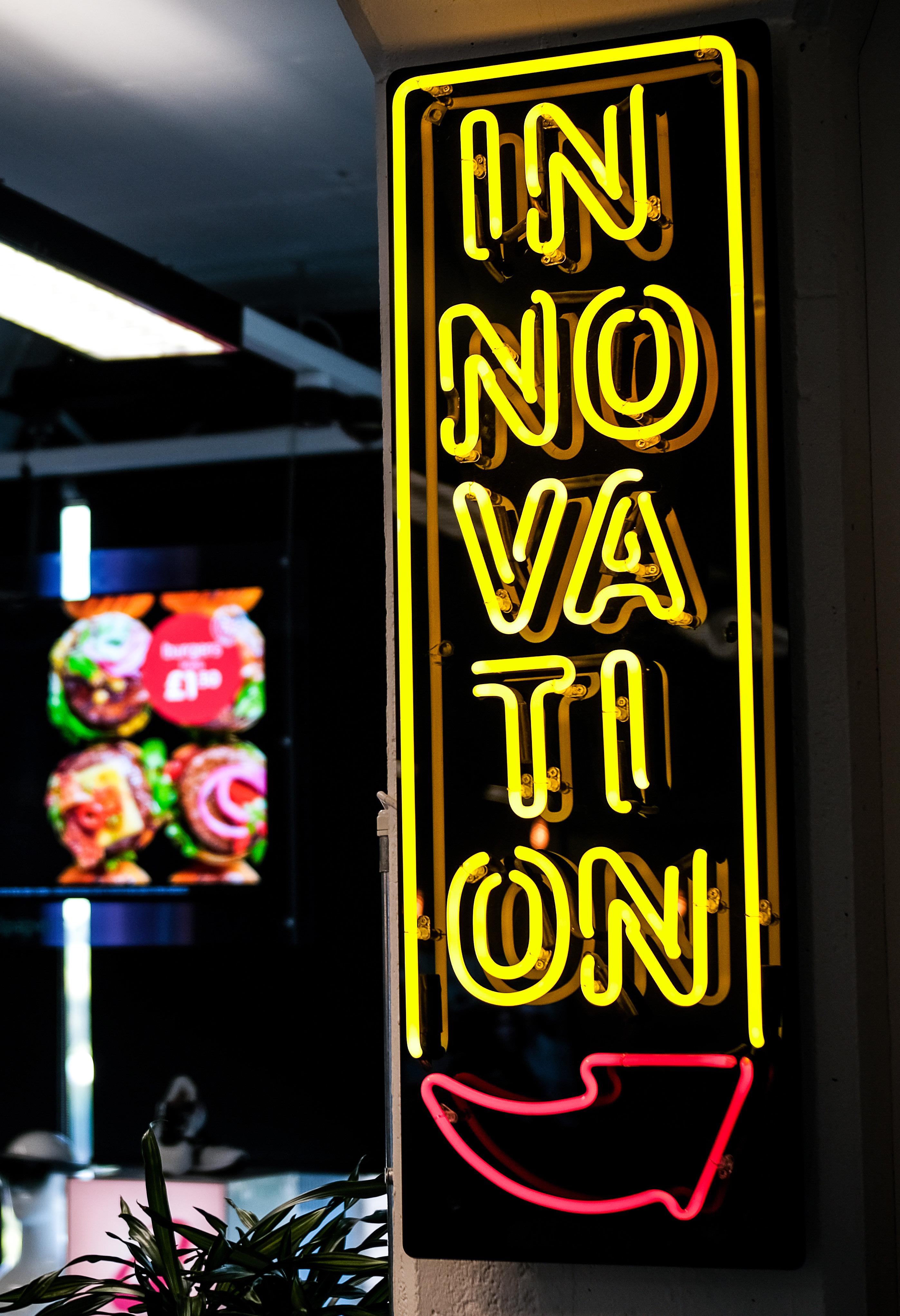

Sometimes this will be due to the practicality of pursuing this venture, particularly if it requires new infrastructure to be built in order to support its development. However, the most common challenge that entrepreneurs face is convincing those above them that this new innovation is worth the financial cost. The execs may think it’s an interesting or even good idea, but if the funding is coming out of their pockets then there’s a good chance it’ll be rejected before it gets off the ground.


You can see these trends looking back through history – take the car, for example. Nowadays it’s impossible to imagine life without it, but when automobiles were introduced it was thought that they’d never be affordable enough to be viable as a mass-market product – failing to anticipate the development of new, cheaper production techniques.
Although the infrastructure wasn’t quite there at the time to reduce production costs and increase affordability, luckily the benefits of the car were obvious enough
70
that people adopted a long-term mindset and pushed forward with it regardless.
HOW CAN THEY OVERCOME THESE OBSTACLES?
Ultimately, you’re going to need to rely on executives and investors adopting your entrepreneurial mindset, even if their natural instinct is to play it safe.

These are the key moments that will define the success or otherwise of your innovation. Do the higherups reject a good idea at stage 1,
because they can see a potential issue cropping up further down the line, or do they push ahead and see if they can solve that problem in the meantime, or potentially open up another avenue that hasn’t been considered yet? If it becomes obvious that this idea isn’t viable then they can always scrap it at stage 2 or 3, albeit having wasted a bit of time and money.
Unfortunately, this will be a line in the sand for many execs and investors – for them, the financial risk will outweigh the potential rewards.

71
“THE MOST COMMON CHALLENGE THAT ENTREPRENEURS FACE IS CONVINCING THOSE ABOVE THEM THAT THIS NEW INNOVATION IS WORTH THE FINANCIAL COST”
WHY IS INNOVATION IMPORTANT FOR ENTREPRENEURS? WHAT ARE THE RISKS OF NOT INNOVATING AND THE OPPORTUNITIES FROM EMBRACING IT?
If you’re making all your decisions based on minimising risk, then sooner or later you’re going to be left behind as new, more innovative players enter the market. Sticking to the tried-and-tested formula may sustain you for a while, but eventually you’ll end up just another voice lost in the crowd, with nothing to set you apart.

This is particularly relevant at the moment with the development of AI. The more decisions taken by AI instead of human beings, the more likely you are to end up doing the same as everyone else.
You need a healthy amount of innovation in your business to keep you moving forward and to ensure that you’re not fading into an increasingly congested background. Even if a new idea sets you back financially in the short term there are a host of other benefits that could emerge, from bringing you to new audiences to positioning you as a pioneer within your space.
This isn’t a carte blanche to approve any and every idea that
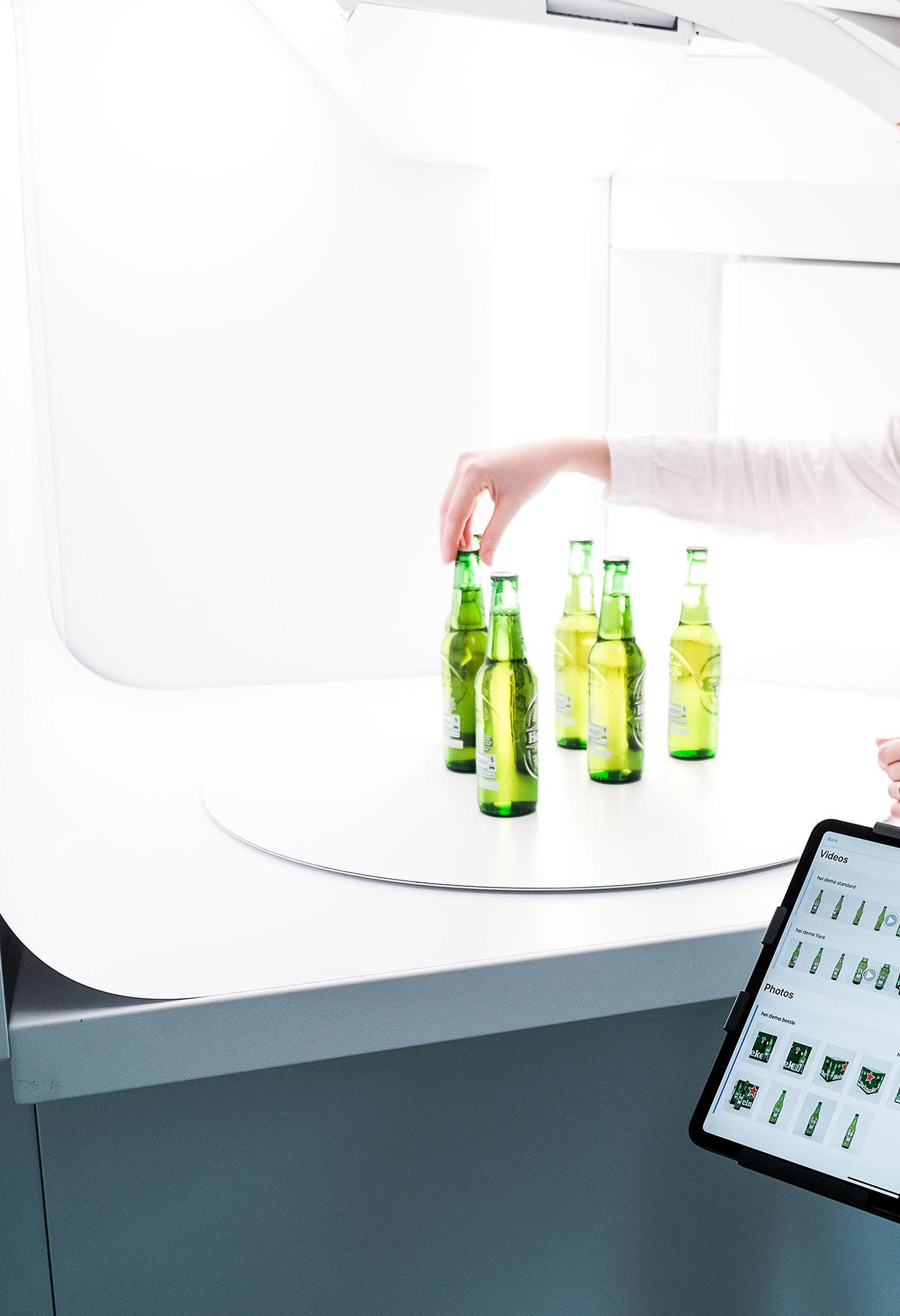
comes across the table, but more a reminder that total aversion to financial risk might lead to other important business areas suffering.
WHAT ARE THE CORE EARLY STEPS TO TAKE TOWARDS INNOVATION?

The first, and arguably most important thing you can do is create a culture that nurtures innovation, where people feel able to bring their ideas forward without fear of judgement or instant rebuttal. That’s vital for most companies, but especially innovation-led businesses. But this won’t happen overnight –it’s something that needs to be ingrained over time.
Again, this isn’t a case of pushing forward with every idea irrespective of merit, but it’s important not to reject ideas just because of some perceived issue that you may well be able to figure out as you progress. You need to give innovation room to blossom, even if occasionally that means failing along the way.
That might sound counter-intuitive, but if you don’t risk falling flat on your face, you’re unlikely to find the gem that transforms into an outand-out success (and you won’t happen upon those lucky accidents

by chance either – it takes effort and commitment).
HOW CAN ENTREPRENEURS SECURE BUY-IN FROM RELEVANT PEOPLE IN THEIR BUSINESS?

The short answer is to be as convincing as possible. As discussed, execs and investors are generally risk-averse, so you’ll need to work hard to convince them of your way of thinking while taking into account the factors that will no doubt be playing on their minds.
You need to arm yourself with the answers to their questions – why is it worth driving ahead with this idea? If the infrastructure isn’t quite there yet, will it be in the future? Yes, there may be costs incurred while you invest, but here’s where you’re going to see the return on that investment. Here’s what our competitors are doing, and this is why we need to do something different.
Flexibility is integral too. You need to be ready to change course or figure out a different way of achieving your goals, because once those above

74
“INNOVATION SHOULD BE TREATED THE SAME AS ANY OTHER MODE OF BUSINESS IMPROVEMENT AND THEREFORE SHOULD BE MEASURED IN THE SAME WAY”
you encounter a roadblock, they’re going to be tempted to cut their losses and pull the plug.
ONCE INNOVATION IS UNDERWAY, HOW


DO YOU MEASURE IF IT'S ON TRACK AND ADDING TANGIBLE BENEFITS TO YOUR BUSINESS?
Innovation should be treated the same as any other mode of business improvement and therefore should be measured in the same way – by returning at each stage to why this particular innovation was needed in the first place.
Like any new piece of equipment or process, you may need to review it over a longer period and potentially across a wider field.
Track transformation projects with tangible, measurable KPIs which will help you see if the innovation satisfies the business case and yields convincing returns on investments. With this evidence on hand, you’ll make a compelling case for persisting with the endeavour.
SOURCE: Team ITG
75
A SILVER LINING
SUSTAINABLE CLOUD

How to reduce carbon thumbprint

ENVIRONMENT
LINING FOR
CLOUD COMPUTING

reduce your digital thumbprint

THE DIGITAL INDUSTRY IS RESPONSIBLE FOR UP TO 4 PER CENT OF THE WORLD'S CARBON DIOXIDE EMISSIONS.

hat’s a larger percentage than commercial aviation. A single data centre is capable of consuming the equivalent electricity of 50,000 homes, according to research from MIT. Meanwhile, Greenpeace has suggested that if the cloud were a country, it would be the sixth biggest consumer of electricity on the planet, after Russia and before Germany.
On these measures, any belief that cloud computing is not
a contributor to environmental damage must be taken with a pinch of salt. At the same time, we’re already on an important technological path toward ubiquitous cloud computing and this brings incredible long-term benefits too. These include greater scalability, improved data storage and quicker application deployment, to name a few.
So, how can we better manage the cloud’s insatiable energy appetite? We say that ‘every cloud has a silver

78


79
lining’ (no pun intended!), so here are five steps you can introduce into your cloud strategy to offset the carbon emissions of your business’s digital thumbprint.

1.
INDUSTRY COLLABORATION/ OPEN-SOURCE
Knowledge-sharing and collaboration are two of the best approaches to finding greener cloud solutions. In the world of DevOps, this means open-source applications.
Collaborating on open-source projects is a way to bring together the best ideas from anywhere in the world. It also represents an effective means to bridge internal knowledge gaps to develop greener cloud strategies from readily available external software resources.
Cloud services like GitHub host open-source projects where developers can share, edit and fine-tune applications for the purpose of building more sustainable software. Open-source is the

80
means to drive sustainable transformation by providing critical transparency, offering traceable decision-making and encouraging more collaboration on green innovation.

By engaging with an online community, organisations can utilise publicly available projects to move in the direction of decarbonisation. reducing carbon thumb prints has become a priority for many app developers with the ‘climate change’ hashtag accounting for no less than 534 public repositories on GitHub, all of which contain open-source software codes contributing to efforts to fight for climate change.

81
“BY ENGAGING WITH AN ONLINE COMMUNITY, ORGANISATIONS CAN UTILISE PUBLICLY AVAILABLE PROJECTS TO MOVE IN THE DIRECTION OF DECARBONISATION”
2.
EFFICIENT USE OF APPLICATIONS
It is an inescapable reality that cloud computing relies on a huge amount of electricity, which is typically powered by fossil fuels. However, steps can be taken to mitigate the effect of carbon emissions through the efficient use of applications. By utilising applications that measure carbon emission rates, you can stay in control of your carbon thumbprint.

Examples of applications that have been created for the purpose of managing carbonisation include kube-green. Capable of reducing CO2 emissions of IT infrastructures by 30 per cent, kube-green mitigates the problem of unused IT resources consuming electricity outside of business hours by giving developers the ability to customise when deployment resources go to sleep and wake up. This negates the cost of leaving clusters running outside of working hours. In

82
simple terms, it is the equivalent of turning off the lights when you leave a room.

Outside of kube-green, there are dozens of applications such as Green Metric Tool, Greenly and Cloud Carbon Footprint that provide tools to measure and reduce the CO2 consumption of an organisation’s software architecture.
Some tech companies go one step further such as Utego, provider of an all-in-one financial application that grants users full visibility of their different bank accounts from a single interface. Utego is a participant in the global 1% for the Planet movement, an initiative where respective members promise to return one per cent of their company turnover to environmental causes.
The basis of containerisation is packaging software code with just the libraries and dependencies as single lightweight executables. Each container houses different software applications and runs isolated processes.
From an efficiency perspective, because containers are smaller they can start up in a fraction of the time virtual machines or servers take. Furthermore, because containers only include what an application needs to run, they are lightweight, meaning that fewer resources are being consumed. Overall, more containers can run on the same compute capacity as a single virtual machine, eliminating overheads and driving higher server efficiency.
3. 4.
CONTAINERISATION OF APPLICATIONS
How your applications are packaged can have a huge impact on their carbon efficiency. One strategy that IT departments can use to reduce their carbon thumbprint in the cloud is the containerisation of applications.
MICROSERVICES ARCHITECTURE
Containerisation helps package software, but you can go one step further with the design of digital platforms, specifically by adopting a microservices architecture. Microservices consist of a suite of small, autonomous services under the banner of a single application. You can think of a microservice as a single LEGO brick that is
83
connected with other bricks to make a more complex structure.
With a microservices architecture, business applications are segmented into independent modular services that can be programmed in any software language, leading to faster deployment and efficient cloud operations. Any of these microservices can be decoupled and managed independently, which makes it easier to automatically scale as needed. This means that if a specific microservice is used a lot, it is possible to replicate only the specific microservice. Clever management of software resources with this type of architecture will ensure that a platform can perform with far greater energy efficiency than has been found with old-fashioned monoliths where this decoupling approach was not possible.
5.
WORK WITH GREEN PARTNERS/ SUPPLIERS
The digital ecosystem of a business is not some abstract concept that lives on a screen. Virtual services require a physical shelter to function. Cloud providers are the


84
landlords and data centres are the block of flats that house the virtual resources of organisations. Because there is now a wide selection of cloud providers in the market, if businesses are serious about decarbonisation, they need to align themselves with green suppliers.


Data centre sustainability has been a key initiative of cloud platforms like AWS and Google Cloud and should be considered when selecting your cloud vendor. For example, AWS has a Customer Carbon Footprint Tool that uses simple visualisations to forecast emissions based on usage, whilst Google Cloud provides a Cloud Region Picker that enables users to select data centre regions with a higher average hourly carbonfree energy percentage. These innovative features in the cloud demonstrate the importance of aligning with responsible third parties.
By choosing suppliers that share the same green ambitions, and without compromising on operational efficiency, organisations can achieve their business goals whilst also paving the way for a greener future.
SOURCE: Mia Platform
85


TECHNOLOGY
Looking ahead at UK urban life in the years to come...


o-called smart cities focus on making life easier for all inhabitants, encouraging advancements not only in technology but also sustainability. Lower emissions, reduced energy usage and carbon neutrality have been made possible via technological advancements. There are roughly 140 smart cities already operating across the world and this number is only predicted to grow. Zurich is currently the leading smart city in the world, closely followed by Oslo, Canberra and Copenhagen. London achieves the sixth spot, providing smart solutions such as an advanced 5G network and heavy

investment in AI. But how ready is the UK for our techforward future?
Key findings
• At the end of 2022, there were a total of 2.7 million public charging points for electric vehicles worldwide.

• The UK currently features 44,400 EV charging points, with 13,382 of these found in London.
• Anti-vandal measures and new innovations will help ready the UK for the expected boom in electric car usage.
• Copenhagen is likely to be the first carbon-neutral city in the world with initiatives like CopenHill leading the charge.
• AI-led initiatives have helped to reduce
88
It’s no secret that smart technology and artificial are becoming more widespread. With 54 per cent of population living in cities, a figure predicted to rise by 2050, there is a clear need for technological advancements keep up with the increase in population.


artificial
intelligence the world’s rise to 66 per cent advancements to
greenhouse gases by 13 per cent in the last two years.
• Nottingham is leading the carbon-neutral race within the UK, successfully reducing their emissions by 52.3 per cent since 2005.
• 23 areas within the UK are trialling more sustainable methods of transportation, such as hireable e-scooters.
• Hull’s Smart Bus scheme improves the city’s sustainability credentials whilst also making their transportation system more accessible.
Electric cars

Lower emissions and a reduction in the use of fossil fuels are some of the key markers of a sustainable, smart city. Electric cars are leading the charge when it comes to minimising emissions.
At the end of last year, there were a total of 2.7 million public charging points for electric vehicles worldwide. China boasts over 1.7 million of these chargers, with Europe installing around 530,000. The United States is lagging behind

in terms of EV charger availability, with the lowest growth rate among the major market players at only 9 per cent.
The UK government has committed to a plan for 100 per cent electric vehicle dominance by 2035, with a ban on the sale of petrol and diesel cars coming into effect in 2030. With a total of 11.6 per cent of all new UK car registrations relating to electric cars in 2021, it does seem that the UK is moving towards an allelectric future.
But the current number of electric charging points across the country totals just 44,400, with 13,382 of these in London. This provision is not enough to keep pace with the number of electric cars predicted to be on the roads in the coming years. In order for the UK to reach its target of 300,000 charging points, monthly installation rate needs to increase by a huge 288 per cent.
The reliability of charging points is also uncertain, with recent research revealing problems with


accessibility and functionality. 30 per cent of Londonderry’s charging points experience extended downtimes. Newcastle follows close behind, with over 21 per cent of charging points within the city non-functional.
Further technological innovations need serious consideration and investment to combat this issue. For example, anti-vandal measures, such as toughened touch screens, will reduce the number of broken charging points. The UK government’s proposal of a streetlamp capable of charging an electric vehicle and selling power back to the National Grid also provides hope for a smarter, more sustainable future.

Sustainable advancements
Sustainability is an essential part of the smart city, as technology strives to make urban life easier and more efficient. The UK must be net zero by 2050 due to a legally binding commitment. Denmark, Finland and Spain are currently leading the race towards carbon neutrality, but it seems Copenhagen will be the first city to claim the title. To reach the goal, 100 per cent of a city’s heating must come from sustainable, renewable sources.
Initiatives such as Copenhagen’s CopenHill are setting them apart

92
“Recent encouraging the city (Nottingham) emissions by 52.3 per
from other cities. CopenHill is a sports centre which sits atop a waste-to-energy plant that supplies power to a large number of homes and businesses within the city. Lahti in Finland is also making strides with their carbonfree symphony orchestra – a world-first achieved by cutting down on transportation and energy usage.
Many of these initiatives are possible with AI and the ability this technology holds to help reduce emissions. In the last two years, the use of AI to attain granular data on a business’ carbon performance and improve power efficiency has helped reduce greenhouse gases by 13 per cent.
The UK aren’t far behind, with Nottingham unveiling plans to achieve carbon neutrality by 2028. Recent encouraging findings reveal the city has reduced its emissions by 52.3 per cent since 2005 – the highest reduction of any UK core city. The city is also following in Copenhagen’s footsteps by turning waste into energy used to power over 5,000 homes and 200 businesses.
Smart transport
There’s more to smart transport than just electric cars. Advancements in technology


93
encouraging findings reveal (Nottingham) has reduced its per cent since 2005”
now allow for larger vehicles, such as buses, to run on low-carbon biogas and hireable e-scooters are currently undergoing a trial period across 23 areas within the UK, including London and Newcastle.

Newcastle’s bright orange scooters have proven popular with locals, travelling more than a million miles during their trial period. However, the trial has seen a number of extensions and there are frustrations around the government’s willingness to fully introduce the sustainable travel
method. With 97 per cent of users viewing the scooters as having a positive impact on the local economy, it surely makes sense for them to be fully legalised, enhancing the sustainability factor of the city.
Hull is another UK city looking to technology to enhance the experience of its community. Their Smart Bus trial began at the start of this year, communicating essential information to passengers waiting at bus stops in an accessible fashion. The ‘Sm@rt’ app is

“hireable e-scooters are currently undergoing a trial period across 23 areas within the UK, including London and Newcastle”
available to download from the app store and gives customers the option to access timetables and important updates from their own phone or to have it read aloud. This will open the bus service to a wider range of passengers, thereby increasing the efficiency of transport whilst also encouraging a more sustainable method of transportation than a car or taxi.
Nottingham has harnessed technology to achieve their net carbon reduction, installing over 130 EV charging ports, ensuring

46 per cent of taxis and 30 per cent of public buses run on either lowcarbon biogas or electricity.
Mark Cambridge, CEO at Zytronic, comments, “The vision of cities such as Newcastle and Nottingham and their use of technology is encouraging when it comes to the UK meeting our net zero goal.

“If the UK continues to innovate and reaches the proposed targets for the coming years, our cities will become truly smart and capable of thriving within the technologically focused future.”
Source: Zytronic
THE FEMALE-FOUNDED

CAPITAL

96 GREEN START UPS
FEMALE-FOUNDED VENTURE
FIRM SUPERCHARGING
Finland’s Greencode Ventures is focused on investing in digital-first startups to accelerate Europe’s green transition.


97


98
HELSINKI-BASED VENTURE CAPITAL FIRM GREENCODE VENTURES HAS ANNOUNCED THE FIRST CLOSE OF ITS FUND THAT FOCUSES ON EUROPEAN STARTUPS THAT ARE ACCELERATING THE GREEN TRANSITION.

firm's first close is nearly €40 million with an aim for a final fund size of €60-100 million.
The VC was founded in late 2022 by Dr. Terhi Vapola and Kaisa Hietala.
The firm has already deployed a portion of the raised capital, participating in carbon removal marketplace Supercritical’s $13 million Series A funding round announced in June this year, a cutting-edge

99
marketplace for carbon removal. Supercritical's mission aligns with Greencode Ventures’ investment thesis to support innovative digital solutions that combat climate change and promote a sustainable future.

LPs backing Greencode Ventures include Business Finland Venture Capital, Nordea Life Assurance
Finland, Pohjola Insurance, OP Life Assurance Company, and Sari Baldauf, chair of Nokia's board of directors as well as

100
"THE GREENCODE TEAM ENVISIONS A FUTURE WHERE 'GREEN' IS THE GROWTH ENGINE AIMS TO ACT AS A STRONG FORCE ENABLING THIS POSITIVE, SUSTAINABLE CHANGE"
FUTURE
AND ENABLING
Dr. Terhi Vapola | Founder & Managing Partner
Mika Anttonen, the majority owner of the energy company St1, have joined Greencode's advisory board.
"We are delighted to provide our support for the launch
of Greencode's fund, which will invest in promising earlystage climate tech companies in Finland and Europe,” says Petri Serenius, the Investment Director
of
Business Finland Venture Capital. “We couldn't


101
ENGINE
think of a more relevant and impactful investment topic for a venture fund. Greencode boasts experienced personnel capable of creating substantial value for their portfolio companies.”
The Greencode team envisions a future where ‘Green’ is the growth engine. The firm believes that innovative companies are key to achieving this future and Greencode aims to act as a strong force enabling this positive, sustainable change.
Greencode champions the belief that diversity is key to innovation and progress, and it is determined to lead by example. As a female-led and founded VC, Greencode Ventures aims to address the underrepresentation of female founding teams in the VC landscape since only one per cent of all VC funding in Europe is raised by women-only founding teams.
Learn more about Green Code Ventures by visiting its website greencode.vc.

Source: Green Code Ventures / tech.eu

102
Kaisa Hietala Founder & Chair


103
"GREENCODE CHAMPIONS THE BELIEF THAT DIVERSITY IS KEY TO INNOVATION AND PROGRESS, AND IT IS DETERMINED TO LEAD BY EXAMPLE"
Transforming the future by electrifying the past
hat if there was a way to install the latest, environmentally-friendly engineering technology into classic cars built half a century ago?
That’s precisely the goal of Bavarian Econs, our startup of the month for August 2023.

Bavarian Econs is an innovative automotive startup that takes classic BMW cars from the 1970s and 1980s and drives them into the 21st century.
But Bavarian Econs is not just conserving the legacy of vintage cars, the company is deploying innovative engineering technology to transform them into electric vehicles – challenging the status quo in the automotive industry and redefining the future of cars that defined an era.

The company redesigns and rebuilds classic BMWs in a sustainable way,

adding electric charging capacity so they remain a legacy for future generations of auto-enthusiasts for decades to come.
Co-founder Edgar Navarro is passionate about helping entrepreneurs, founders and corporate leaders to create a better future through technology and innovation.
“I have more than 10 years of experience in areas of innovation and technology,” says Edgar. “I currently serve as the Director of Innovation and Marketing for KPMG Colombia, where we have positioned KPMG in the entrepreneurship ecosystem.
“In 2020 I co-founded Bavarian Econs, a German company from which we are looking to break paradigms in the classic car industry allowing the reinsertion of this type

IN THE SPOTLIGHT
of car into modern life through their electrification.”
At the moment, Bavarian Econs offers the 2002te model – with more vehicle options planned for release in the near future.

Under the hood in the 2002te, every aspect of the 400V High Voltage system has been carefully tuned and configured in order to meet the highest German industrial and quality standards. Only original equipment manufacturer (OEM) High Voltage components are used in their Econs and Elektros. The company put prototypes through thousands of kilometres of extreme testing. The
rigorous process culminated in cars with fast charging capacities of up to 50kw/h and stellar performance on long-distance and high-speed runs on the Autobahn and the most epic roads on and around the Alps at any temperature and climate conditions.
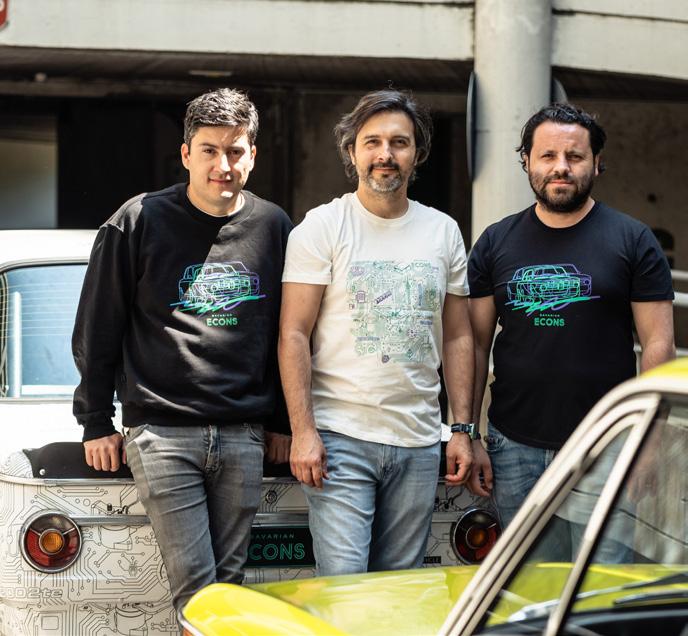
Bavarian Econs prioritises a balance between sustainability, everyday usability and a superb driving experience by using the finest components with a real racing heritage. This allows their vehicles to perform formidably with a low centre of gravity and almost perfect weight distribution allowing for better traction.

To learn more about Bavarian Econs, visit their website bavarianecons.com

“Bavarian Econs is an innovative automotive startup that takes classic BMW cars from the 1970s and 1980s and drives them into the 21st century”


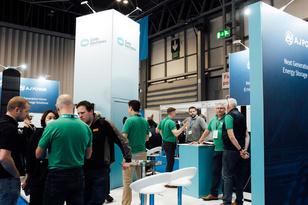

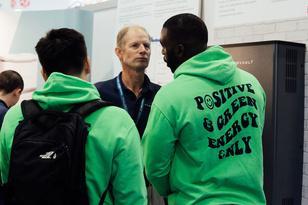

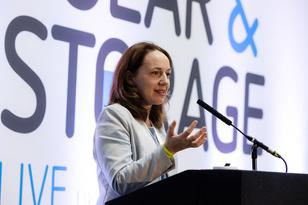





106 THE UK'S LARGEST RENEWABLE ENERGY EXHIBITION 17-19 OCTOBER 2023 | NEC BIRMINGHAM 15,000+ ATTENDEES 400+ EXHIBITORS 300+ SPEAKERS www.terrapinn.com/ssl/digitalinnovation solar-storage-live SolarStorageUK OFFICIAL PARTNER Solar & Storage Live is the UK’s most forward-thinking, challenging and exciting renewable energy exhibition, celebrating the technologies at the forefront of the transition to a greener, smarter, more decentralised energy system. JOIN US IN OCTOBER FOR FREE: TITLE SPONSOR


 We sit down with Bart Coppelmans to discuss the innovative approach to location intelligence at HERE Technologies
We sit down with Bart Coppelmans to discuss the innovative approach to location intelligence at HERE Technologies
















































































































































